- Radio Programs
- Radio Stars
- Buy Old Time Radio
- Commercials
- Radio Scripts
- Public Playlists
- journey into space
+ Journey Into Space is a BBC Radio science fiction programme, written by BBC producer Charles Chilton. It was the last radio programme in the UK to attract a bigger evening audience than television. Originally, four series were produced (the fourth being a remake of the first), which went on to be translated into 17 languages (including Hindustani, Turkish and Dutch) and broadcast worldwide (including the United States, New Zealand, Australia and the Netherlands). Chilton went on to write three best-selling novels and several comic strip stories, based upon the radio series. The first series was created in 1953, soon after Riders of the Range (a popular Western, also written by Chilton) ended its six seasons on the BBC Light Programme. Michael Standing, then Head of the BBC Variety Department, asked Chilton if he could write a sci-fi programme, and Journey to the Moon (later known as Operation Luna) was the result. Each half-hour episode would usually end with a dramatic cliffhanger, to increase the audience's incentive to tune in to the next episode. The original magnetic recordings of the show were erased shortly after broadcast, and for several decades, it was believed that no recordings of the show still survived. However, in 1986, a set of mis-filed Transcription Service discs (produced for sale to overseas radio stations) were discovered, containing complete copies of the three original series (more accurately, the surviving version of the first season is a cut-down remake of the original, produced for the Transcription Service during the 1950s). This discovery enabled the BBC to begin re-broadcasting the show in the late 1980s, and release copies of the show, first on audio cassette, and more recently on CD and internet download.-WikiPedia
- Radio Shows

Please enjoy these 33 old time radio episodes:
john bakewell
JOURNEY INTO SPACE
Clive Matthews.
Donald Cooper
John Bicknell
Richard E Semark
Harold Baker
Leave a comment
Email * Your email address will not be published.
Other "Sci-fi" Shows you may enjoy:
- Foundation trilogy, the
- Science-fiction
- Exploring Tomorrow
- Challenge of space
Would you like to create an account?
You will be able to create playlist of your favorite episodes and series.

Please sign in
JOURNEY INTO SPACE
Spotify is currently not available in your country.
Follow us online to find out when we launch., spotify gives you instant access to millions of songs – from old favorites to the latest hits. just hit play to stream anything you like..

Listen everywhere
Spotify works on your computer, mobile, tablet and TV.

Unlimited, ad-free music
No ads. No interruptions. Just music.

Download music & listen offline
Keep playing, even when you don't have a connection.

Premium sounds better
Get ready for incredible sound quality.
Welcome to ViewSpace
Hero interactive.

Explore the Universe with Interactives and Videos
About ViewSpace
What is viewspace.
ViewSpace is a free, web-based collection of digital interactives and videos highlighting the latest developments in astronomy and Earth science.
ViewSpace gives you the opportunity to explore our planet, solar system, galaxy, and universe. Provided free with the support of NASA, ViewSpace is developed by a team of scientists, educators, and communication specialists who collaborate to ensure that content is accurate, up-to-date, engaging, relevant, and accessible to a wide audience.
Interactives
ViewSpace interactives allow you to explore objects and materials from different perspectives, discovering how we can combine information to better understand the universe.
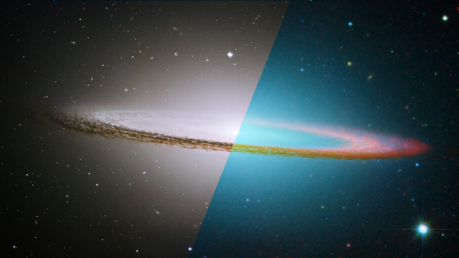
Different forms of light: Explore visible and invisible wavelengths of light that help us understand features like the dusty brim of the Sombrero Galaxy roughly 30 million light-years away.
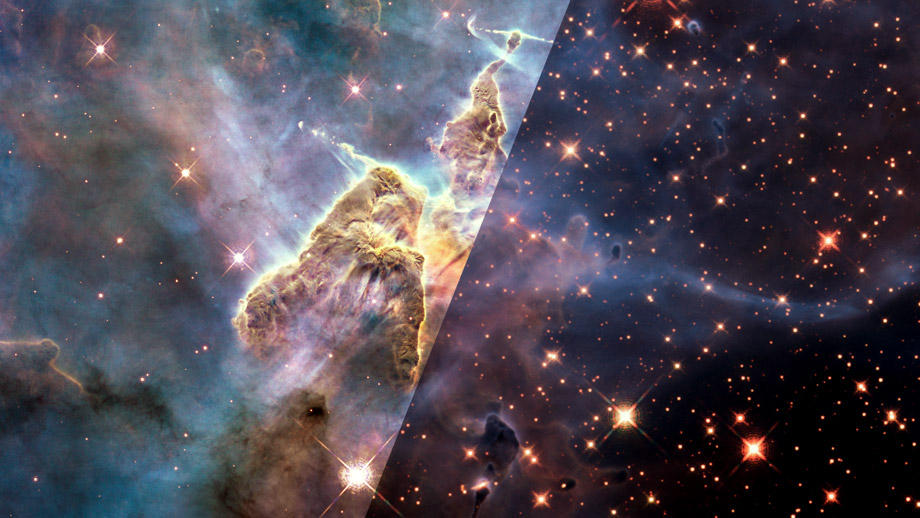
Hidden objects: Unveil invisible light to reveal hidden objects like the stars forming inside Mystic Mountain, a pillar of gas and dust 7,500 light-years from Earth.
ViewSpace videos tell the stories of the planets, stars, galaxies, and universe, giving viewers the opportunity to experience space and Earth as seen with satellites and telescopes.
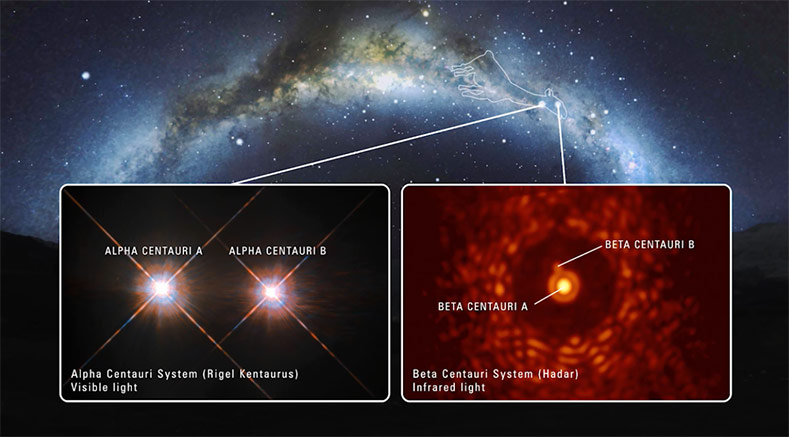
Astronomy: Explore the sky with stories told through spectacular imagery from space telescopes.
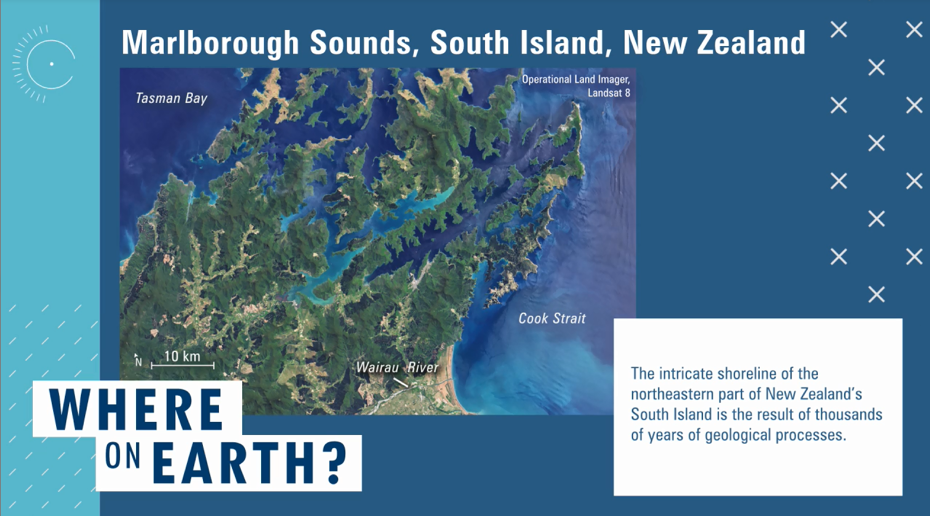
Earth science: Gain new perspectives on our home planet based on data gathered by Earth-orbiting satellites.
ViewSpace is produced by the Office of Public Outreach at the Space Telescope Science Institute , in partnership with the NASA's Universe of Learning project and NASA's Earth Observing System, Hubble Space Telescope Project, and James Webb Space Telescope Project.
ViewSpace has been exhibited in museums, planetariums, and science centers across the country since 2000.
What Will You Explore?
The Latest Discoveries in Astronomy and Astrophysics
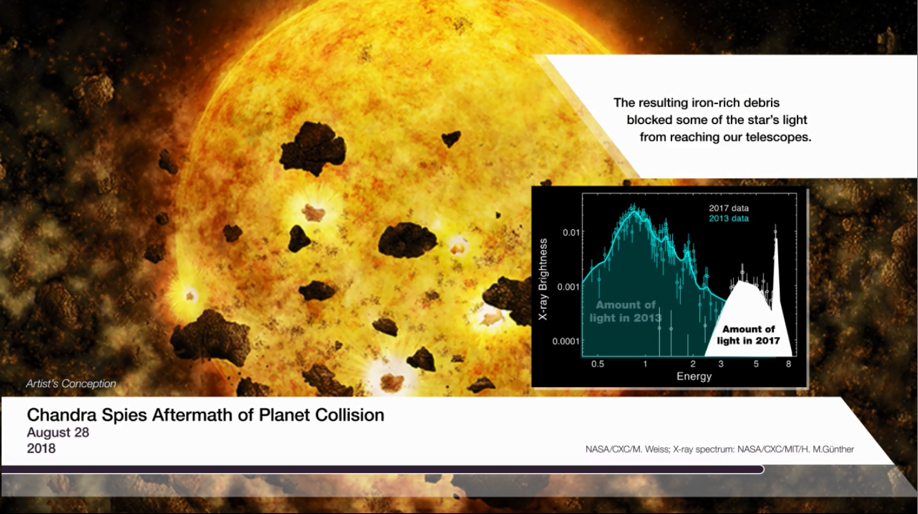
Recent Natural Events and Satellite Views of Earth
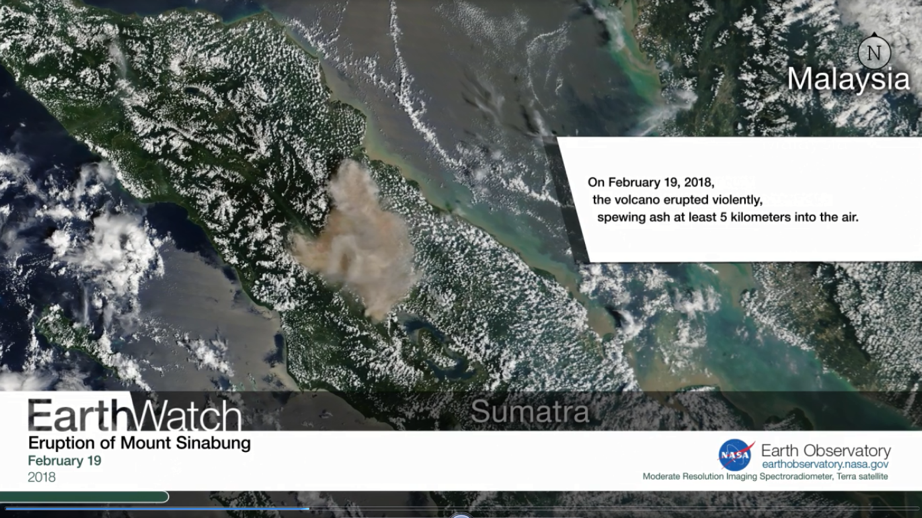
In-depth Stories of How Science and the Universe Work
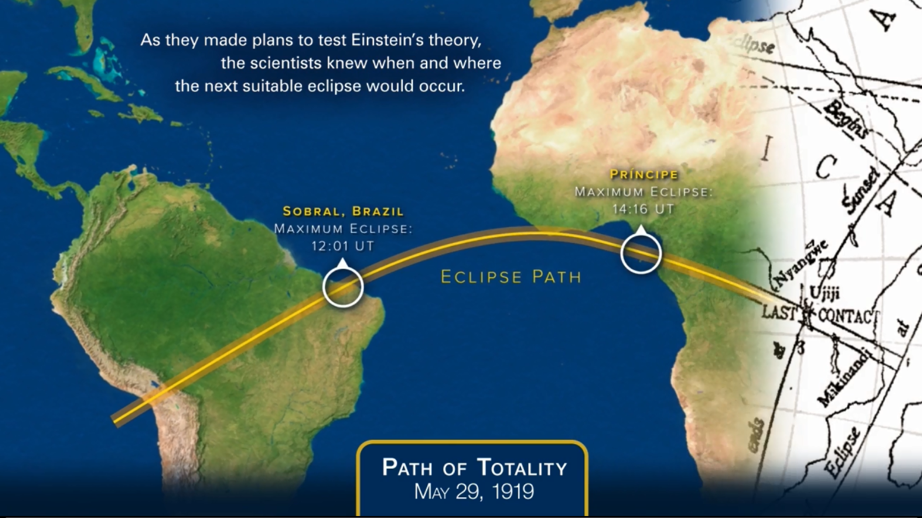
Stunning Imagery and Accessible Explanations
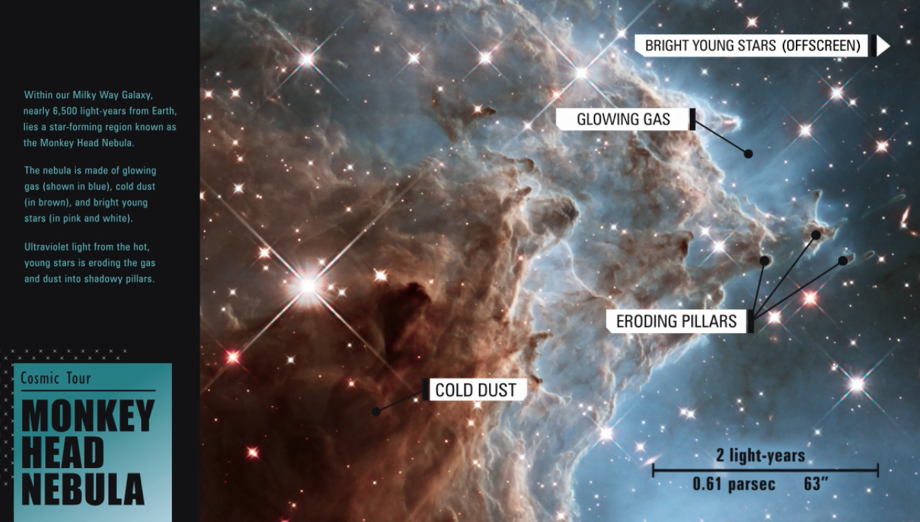
Sample Images from ViewSpace
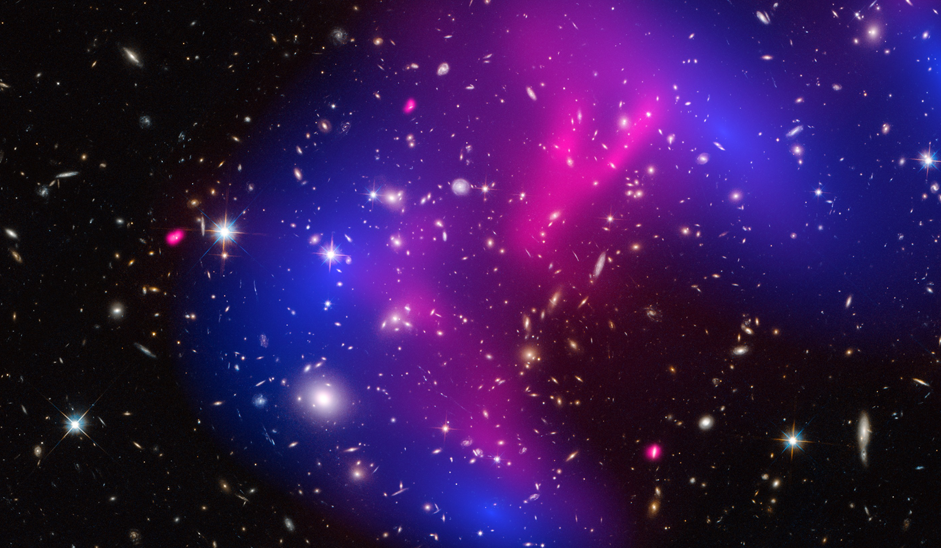
What objects and materials make up the universe, and how do we study the invisible as well as the visible?
Data from NASA’s Hubble Space Telescope and Chandra X-Ray Observatory are used to create a map of dark matter (blue) in galaxy cluster MACS J0717.5+3745.
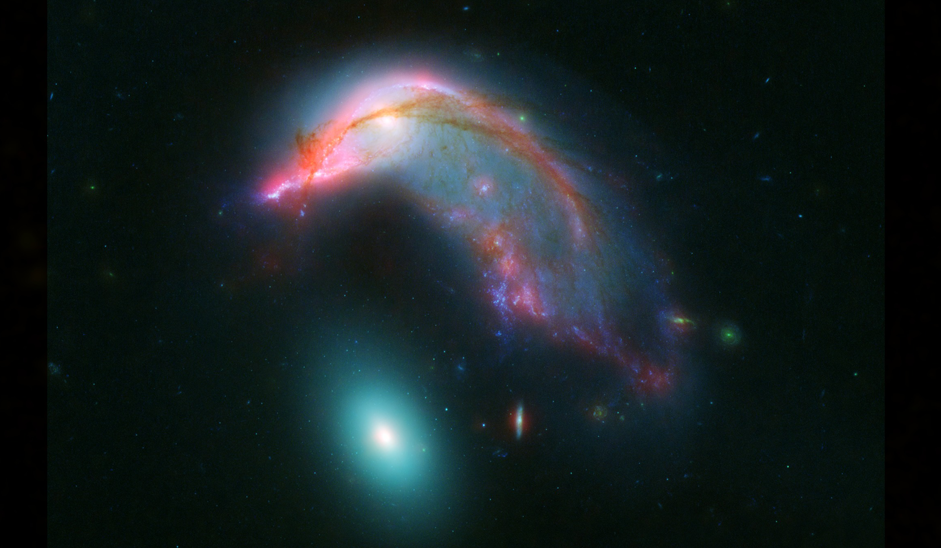
What are galaxies; how do they vary; and how do they form, interact, and change over time?
The Penguin and the Egg (Arp 142) is a pair of galaxies that are being distorted by their mutual gravitational attraction.
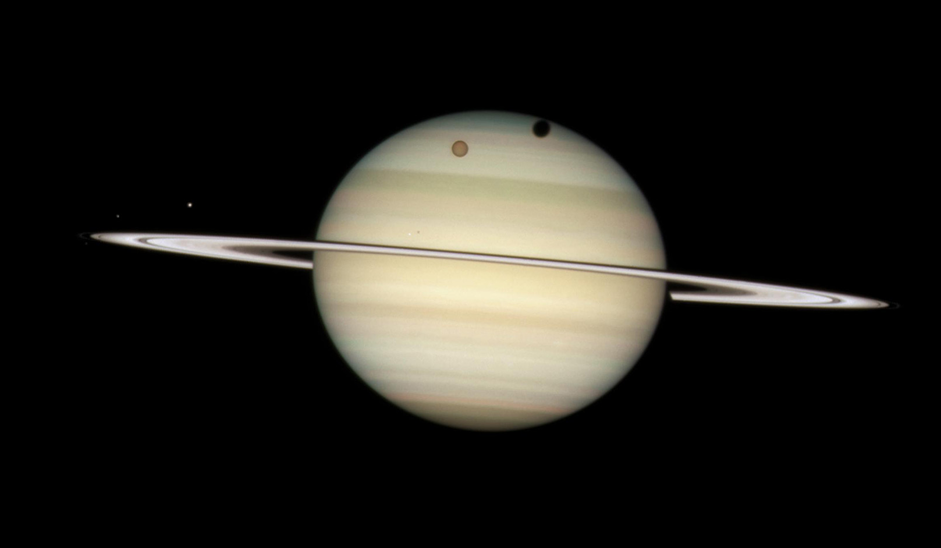
How do the Sun, planets, moons, comets, and asteroids interact as a system?
Saturn’s moon Titan casts a shadow as it passes between the planet and the Sun.
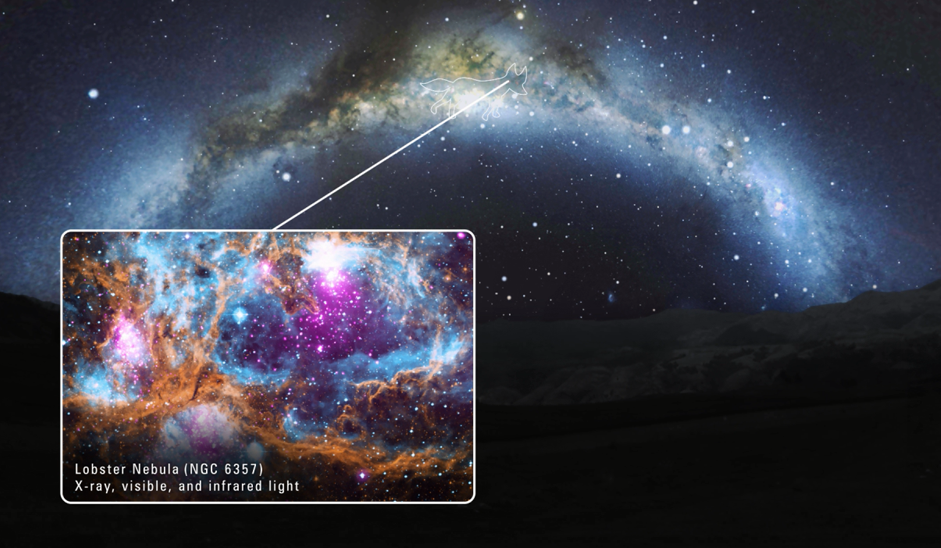
How do telescopes help us better understand the objects and materials that light up the sky?
With telescopes, we can see details of the Milky Way, including glowing clouds of dust and gas like the Lobster Nebula.
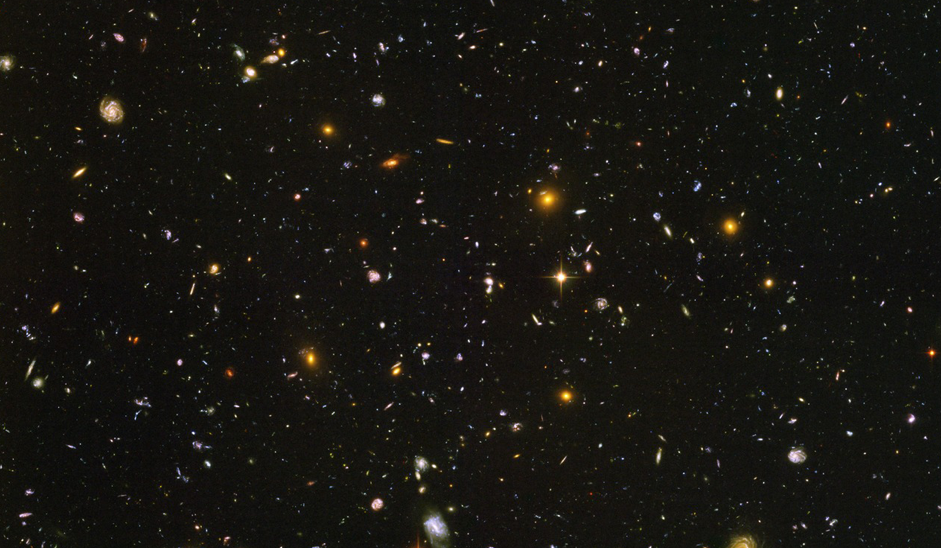
How fast is the universe expanding and what does this tell us about its past and future?
Over time, space expands, stretching the wavelenghts of light and causing the distant galaxies seen in the Ultra Deep Field image from the Hubble Space Telescope to look redder than the closer galaxies.
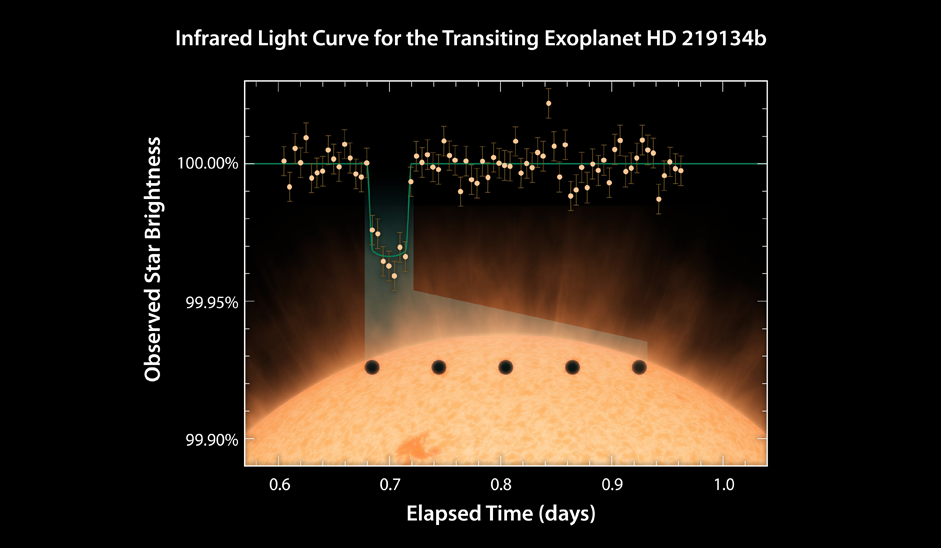
How do we detect and study planets orbiting other stars?
Changes in the brightness of starlight, measured by NASA’s Spitzer Space Telescope, indicates the presence of a planet orbiting the star.
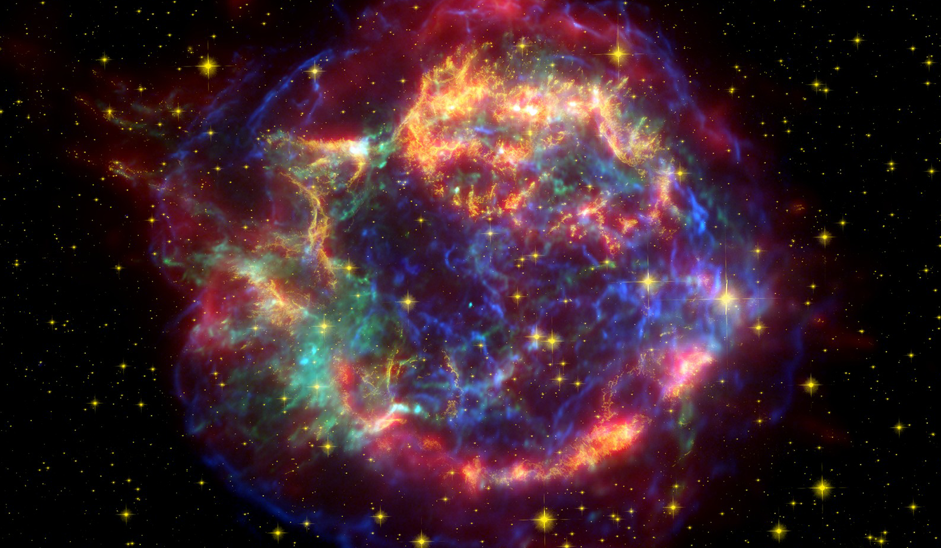
What happens to stars at the end of their lives, and how do stellar explosions affect the space around them?
Visible, infrared, and X-ray light from supernova remnant Cassiopeia A reveal remains of an exploded star.
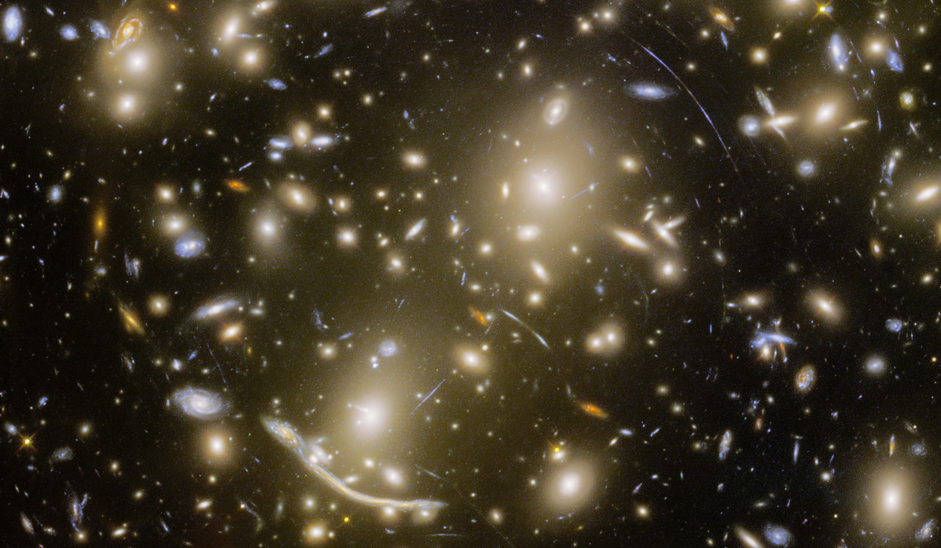
How can we use interactions between light and matter to probe the deep universe?
The enormous mass of galaxy cluster Abell 370 bends the space around it, magnifying and distorting the light from more distant galaxies into arc-like streaks.
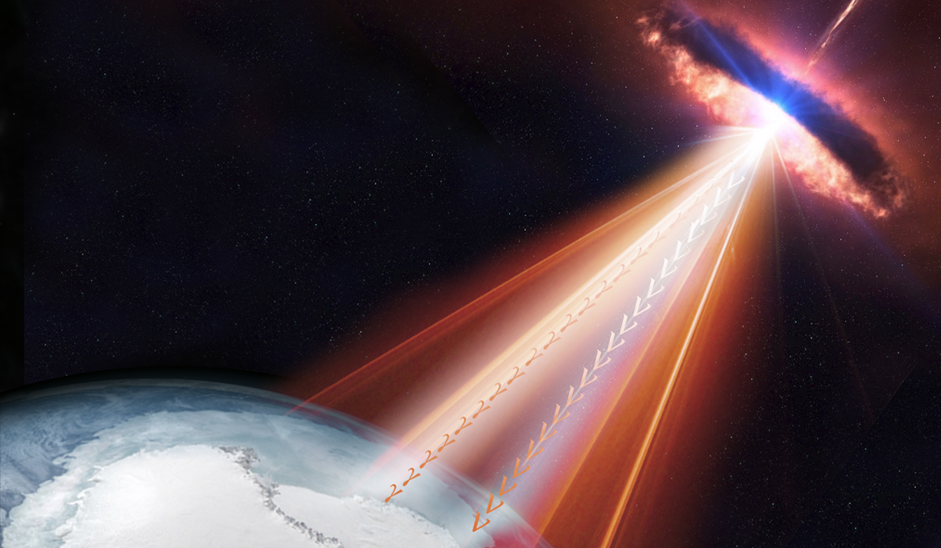
How are astronomers combining data from space and ground-based telescopes, particle detectors, and gravitational wave detectors to understand cosmic objects, processes, and events?
An artist’s illustration depicts the detection of neutrino particles and gamma rays emitted by a supermassive black hole at the center of a distant galaxy.
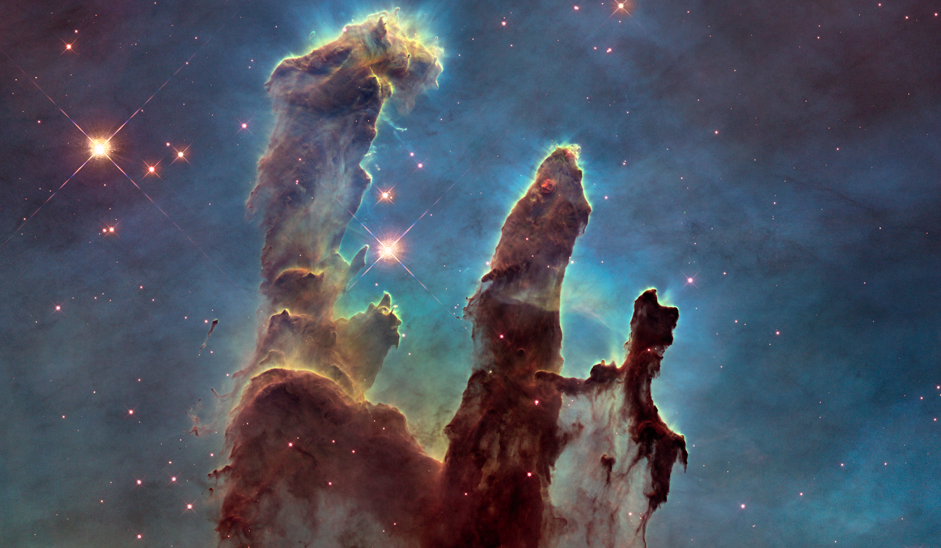
How and where do stars form, and how do they shape their surroundings?
Pillars of gas and dust in the Eagle Nebula are sculpted and illuminated by stellar winds and high-energy radiation of bright stars.
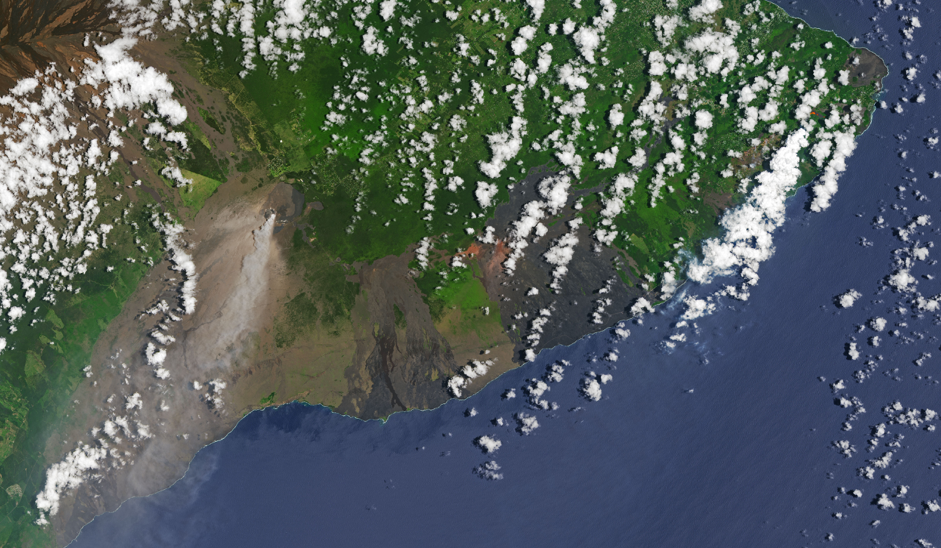
How can we use satellites to map, study, and monitor Earth’s land surface, oceans, and atmosphere?
An image captured by the Landsat 8 satellite in May 2018 shows active lava flows from Kilauea volcano in Hawaii.
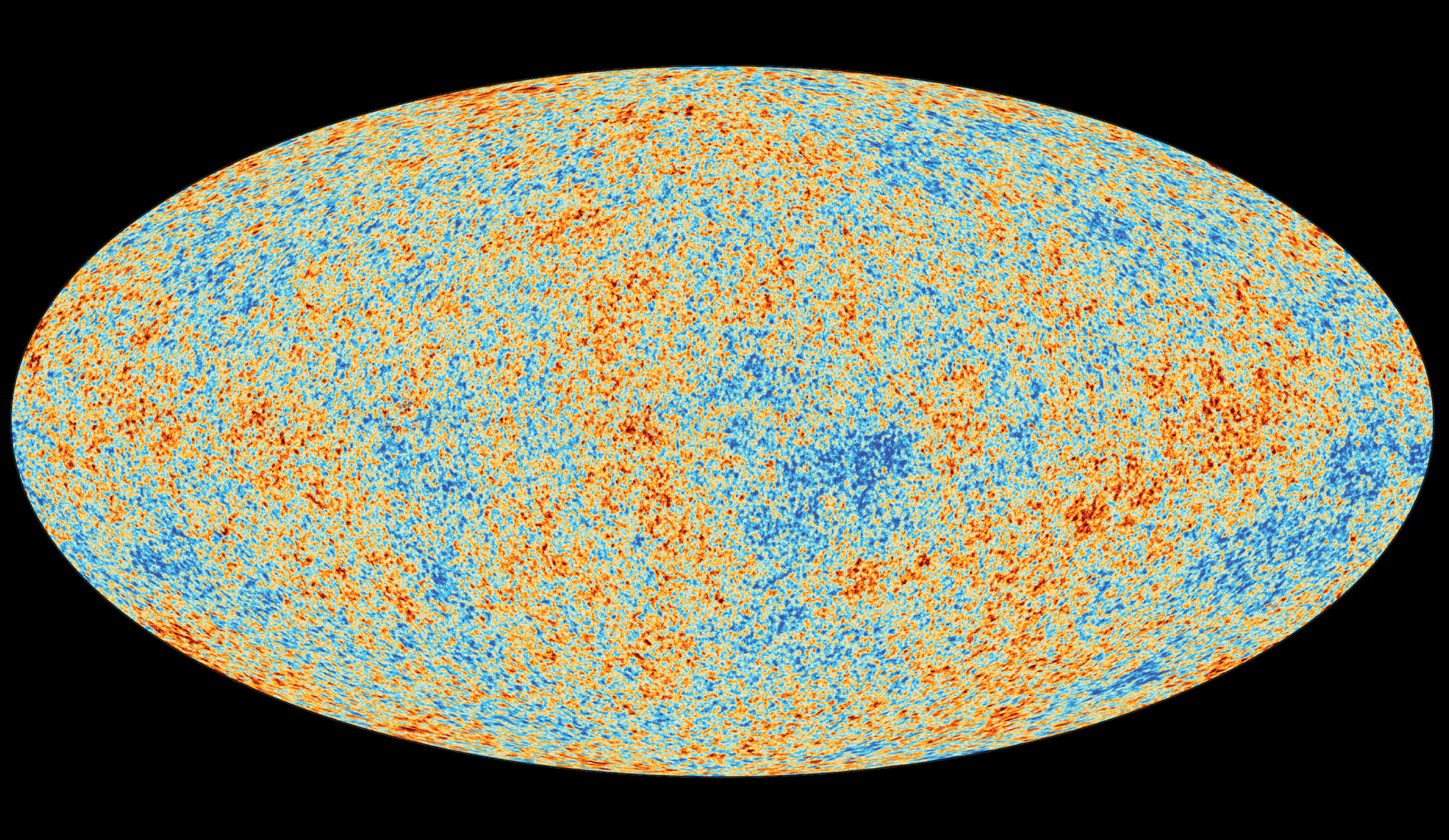
What evidence supports our theories of how the universe formed and how it has evolved over time?
A map of the sky from the Planck Space Telescope highlights variations in the cosmic microwave background radiation—energy left over from the big bang some 13.8 billion years ago.
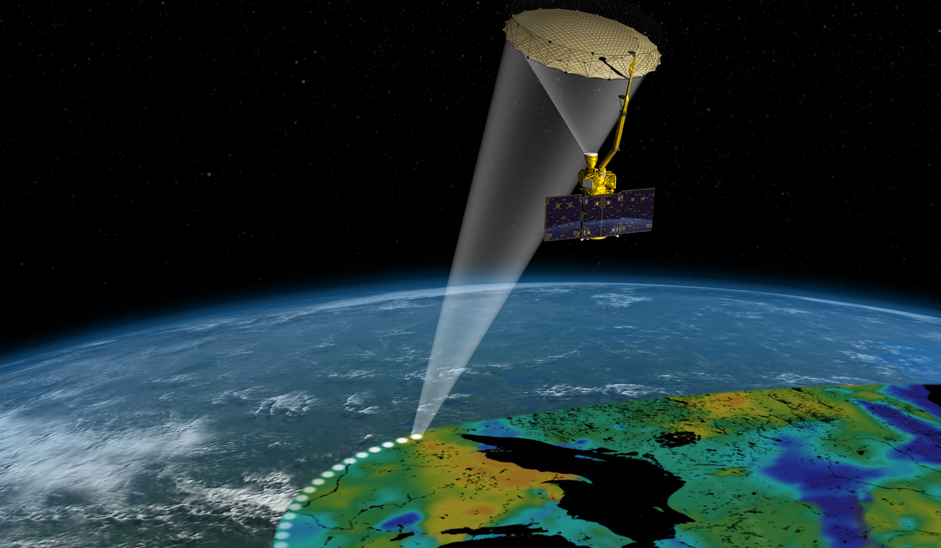
What tools and methods do scientists use to study Earth and space?
NASA’s Soil Moisture Active Passive satellite (SMAP) helps scientists monitor droughts, predict floods, and improve farm productivity.
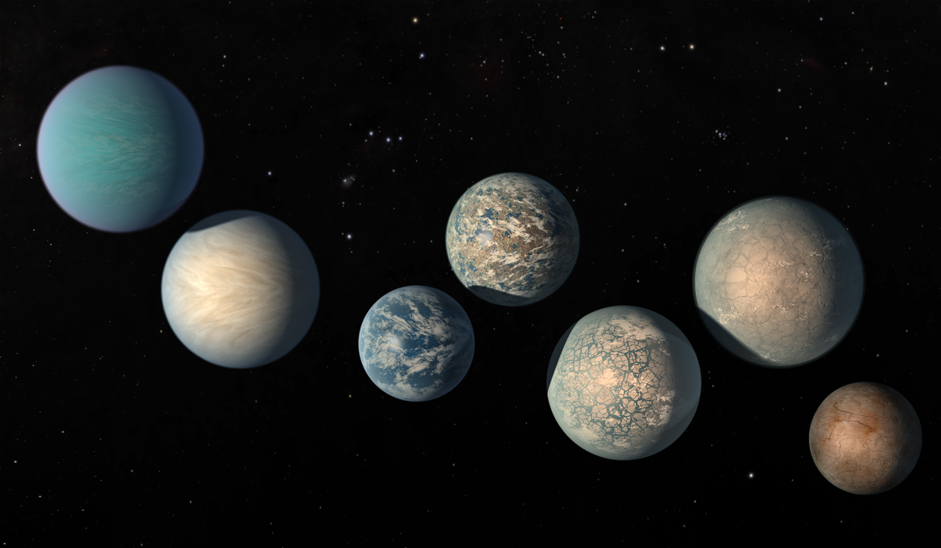
Is Earth unique? Are we alone?
Observations from space telescopes have revealed thousands of exoplanets of different of sizes, compositions, temperatures, and atmospheres, including seven rocky Earth-sized planets of the TRAPPIST-1 system, 40 light-years from Earth (artist’s illustration).
Where Is ViewSpace?
ViewSpace videos are on exhibit at museums, science centers, and planetariums across the country.
ViewSpace interactives are available online.
Use the map to find a ViewSpace video location near you.
Location Spotlight
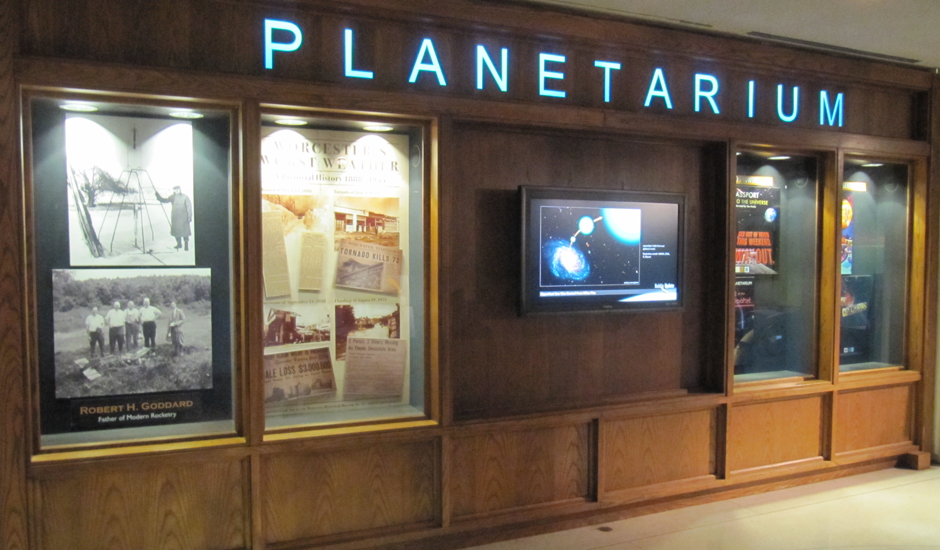
Worcester, Massachusetts
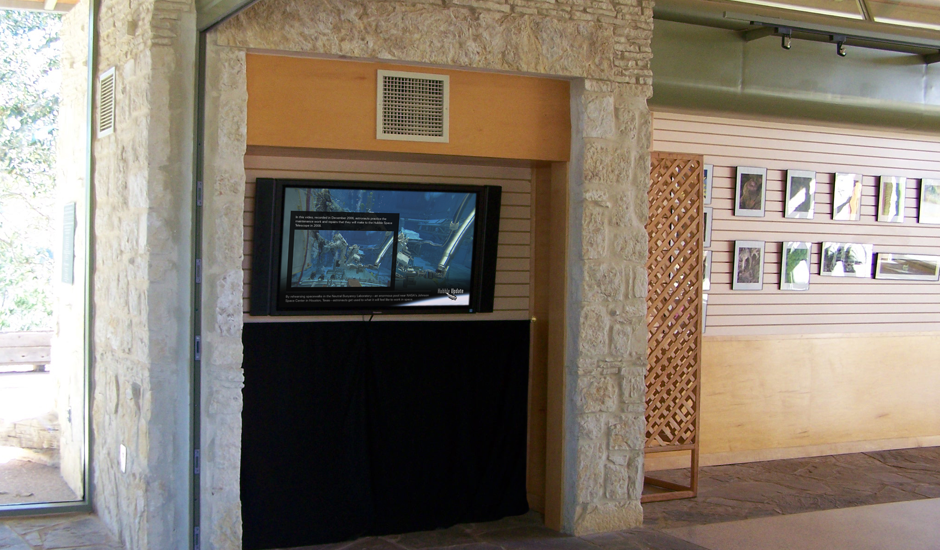
Westcave Preserve
Round Mountain, Texas
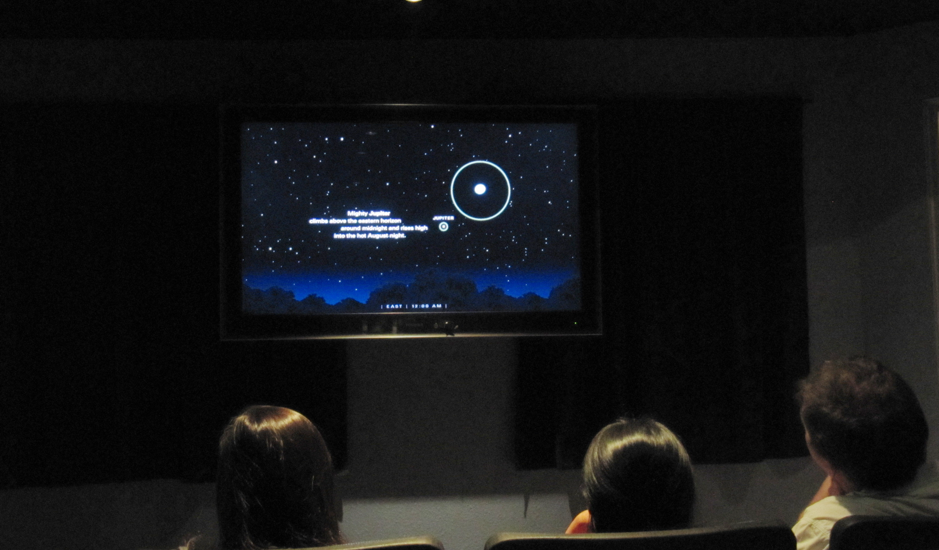
Lowell Observatory
Flagstaff, Arizona
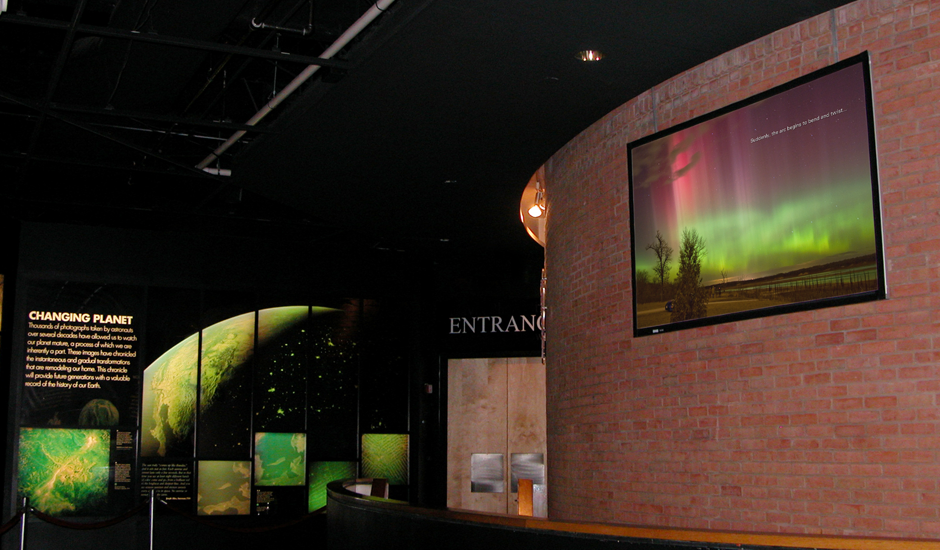
Maryland Science Center
Baltimore, Maryland
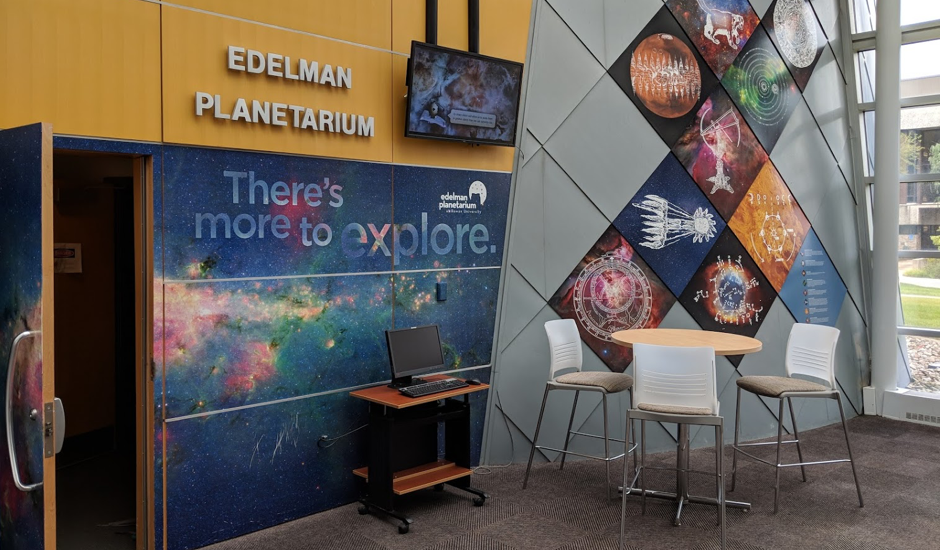
Edelman Planetarium at Rowan University
Glassboro, New Jersey
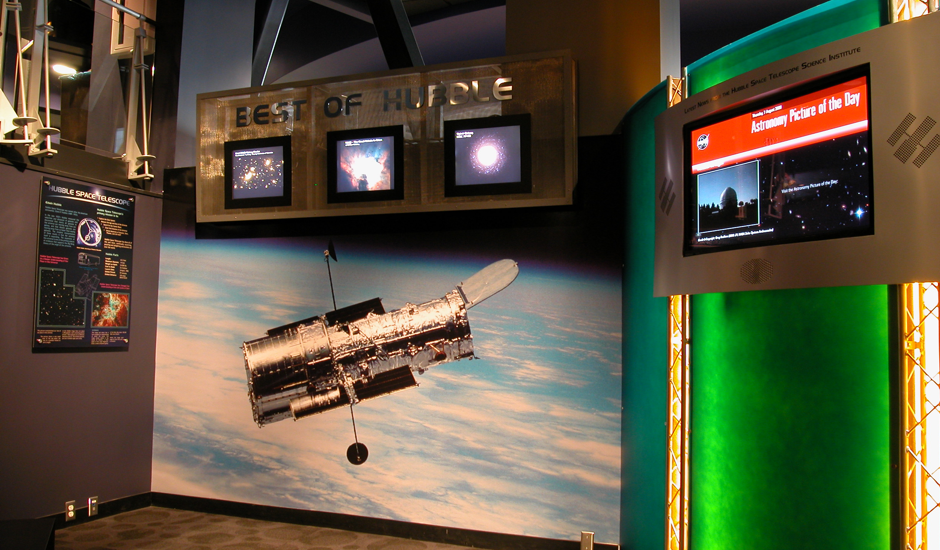
Clark Planetarium
Salt Lake City, Utah
Becoming a ViewSpace Venue
ViewSpace provides informal learning sites with engaging, accurate, relevant, and up-to-date astronomy and Earth science content. Access to ViewSpace is free, requiring only registration, a computer or Smart TV, and persistent internet access. ViewSpace content is self-updating and videos can be set to play automatically, requiring minimal staff effort to maintain.
Join hundreds of others in featuring ViewSpace as part of your exhibits.
Who Produces and Supports ViewSpace?
ViewSpace is produced by the Space Telescope Science Institute in Baltimore, Maryland, and is provided free of charge through financial support and subject matter expertise from the NASA’s Universe of Learning project, NASA’s Earth Observing System Project Science Office, NASA’s Hubble Space Telescope Project, and NASA’s James Webb Space Telescope Project.
Funded by NASA’s Science Mission Directorate, NASA’s Universe of Learning is an integrated astrophysics STEM learning and literacy project developed through a partnership between the Space Telescope Science Institute, Caltech/IPAC, NASA’s Jet Propulsion Laboratory, the Smithsonian Astrophysical Observatory, and Sonoma State University.
NASA’s Earth Observing System (EOS) is a coordinated series of satellites designed to observe Earth’s land, atmosphere, oceans, and biosphere. As part of the Earth Science Division of NASA’s Science Mission Directorate, the EOS Project Science Office (EOSPSO) is committed to sharing information with both researchers and the general public.
The Hubble Space Telescope and James Webb Space Telescope are two of NASA’s flagship missions designed to explore and advance our understanding of the universe. The missions’ communications programs are dedicated to sharing scientific advances and making the world’s astronomical information accessible to all.

Suggested Searches
- Climate Change
- Expedition 64
- Mars perseverance
- SpaceX Crew-2
- International Space Station
- View All Topics A-Z
Humans in Space
Earth & climate, the solar system, the universe, aeronautics, learning resources, news & events.
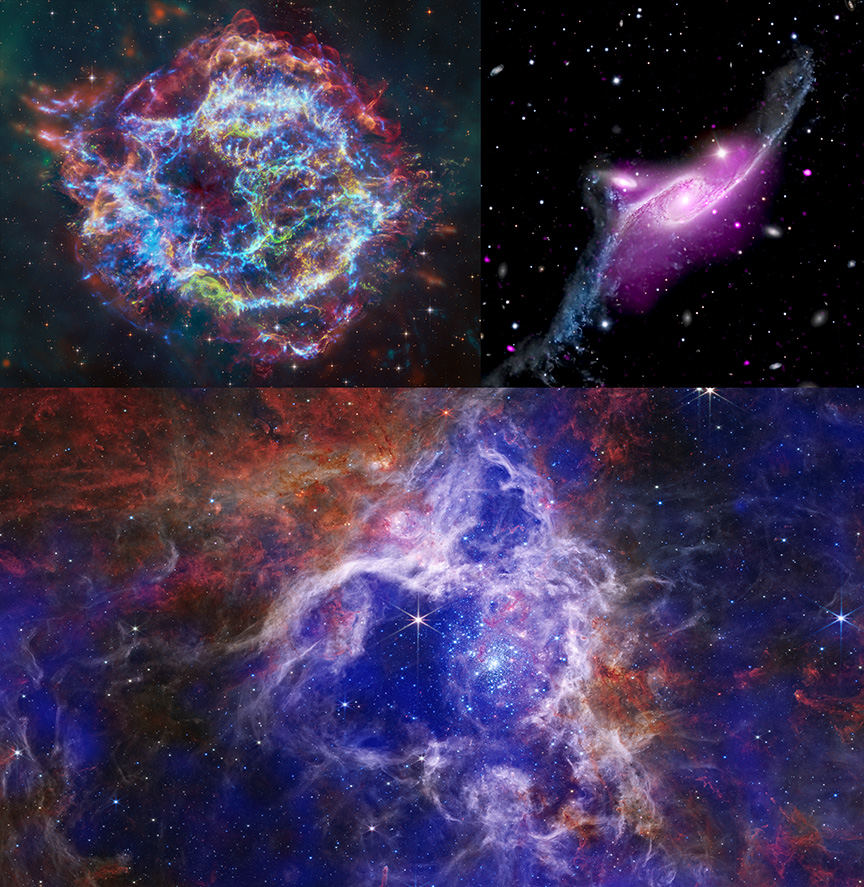
New NASA Sonifications Listen to the Universe’s Past

What’s Up: September 2024 Skywatching Tips from NASA

NASA Mission Gets Its First Snapshot of Polar Heat Emissions
- Search All NASA Missions
- A to Z List of Missions
- Upcoming Launches and Landings
- Spaceships and Rockets
- Communicating with Missions
- James Webb Space Telescope
- Hubble Space Telescope
- Why Go to Space
- Commercial Space
- Destinations
- Living in Space
- Explore Earth Science
- Earth, Our Planet
- Earth Science in Action
- Earth Multimedia
- Earth Science Researchers
- Pluto & Dwarf Planets
- Asteroids, Comets & Meteors
- The Kuiper Belt
- The Oort Cloud
- Skywatching
- The Search for Life in the Universe
- Black Holes
- The Big Bang
- Dark Energy & Dark Matter
- Earth Science
- Planetary Science
- Astrophysics & Space Science
- The Sun & Heliophysics
- Biological & Physical Sciences
- Lunar Science
- Citizen Science
- Astromaterials
- Aeronautics Research
- Human Space Travel Research
- Science in the Air
- NASA Aircraft
- Flight Innovation
- Supersonic Flight
- Air Traffic Solutions
- Green Aviation Tech
- Drones & You
- Technology Transfer & Spinoffs
- Space Travel Technology
- Technology Living in Space
- Manufacturing and Materials
- Science Instruments
- For Kids and Students
- For Educators
- For Colleges and Universities
- For Professionals
- Science for Everyone
- Requests for Exhibits, Artifacts, or Speakers
- STEM Engagement at NASA
- NASA's Impacts
- Centers and Facilities
- Directorates
- Organizations
- People of NASA
- Internships
- Our History
- Doing Business with NASA
- Get Involved
NASA en Español
- Aeronáutica
- Ciencias Terrestres
- Sistema Solar
- All NASA News
- Video Series on NASA+
- Newsletters
- Social Media
- Media Resources
- Upcoming Launches & Landings
- Virtual Guest Program
- Image of the Day
- Sounds and Ringtones
- Interactives
- STEM Multimedia

NASA Invites Social Creators to Experience Launch of Europa Clipper Mission

NASA’s Mini BurstCube Mission Detects Mega Blast

NASA Astronaut Don Pettit’s Science of Opportunity on Space Station

NASA, Boeing Optimizing Vehicle Assembly Building High Bay for Future SLS Stage Production

NASA Seeks Input for Astrobee Free-flying Space Robots
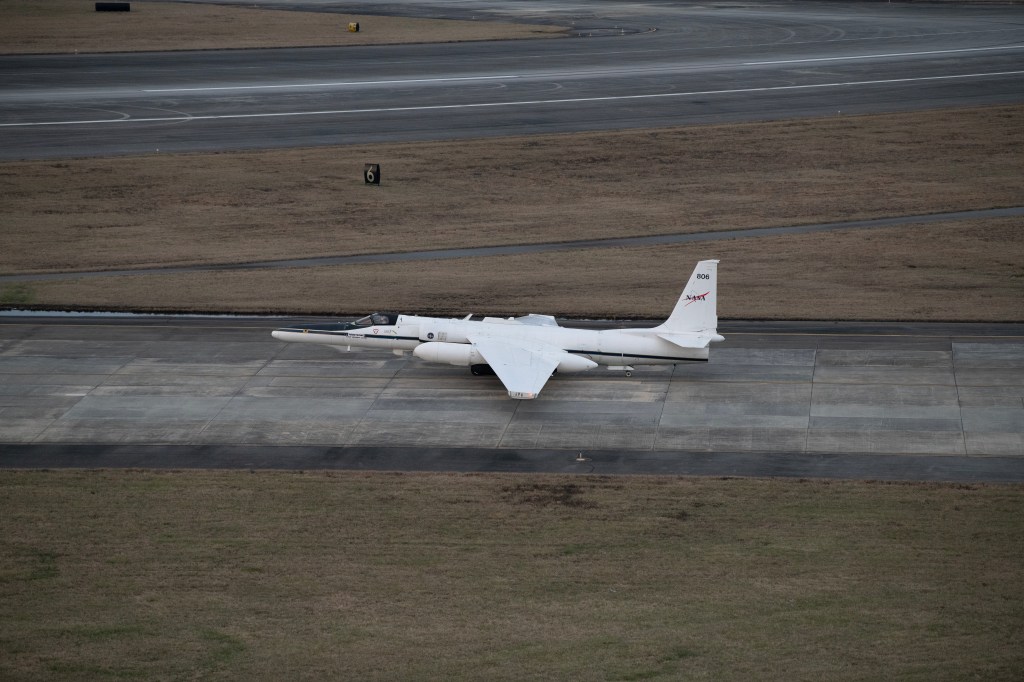

NASA Earth Scientists Take Flight, Set Sail to Verify PACE Satellite Data

Proyecto de la NASA en Puerto Rico capacita a estudiantes en biología marina
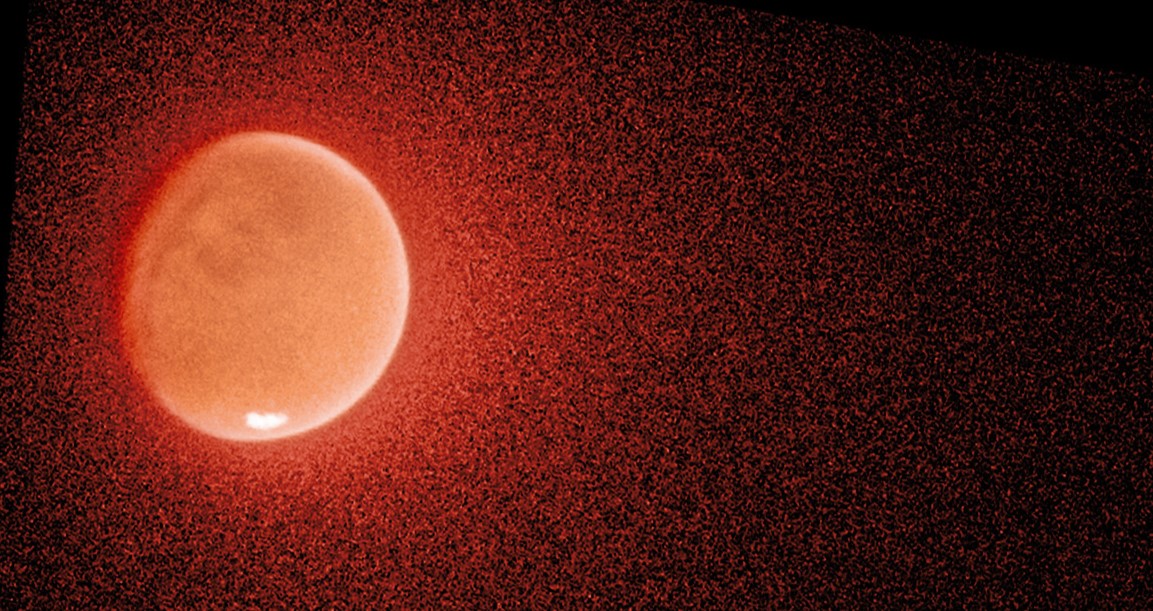
NASA’s Hubble, MAVEN Help Solve the Mystery of Mars’ Escaping Water
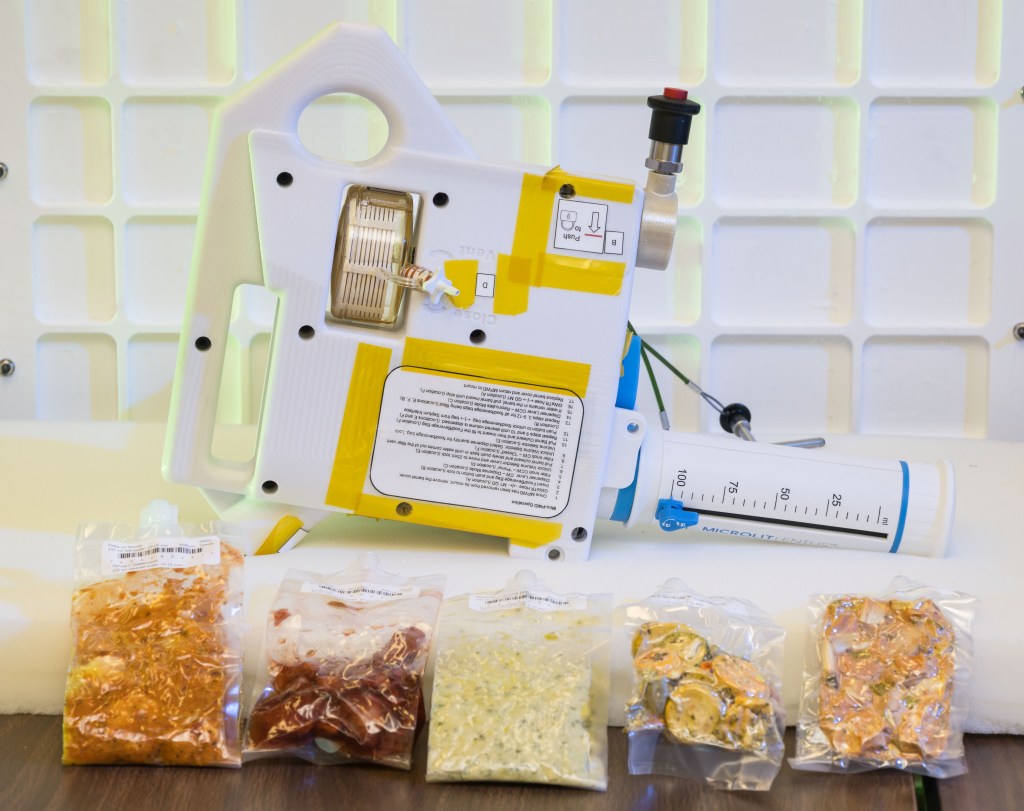
Artemis IV: Gateway Gadget Fuels Deep Space Dining
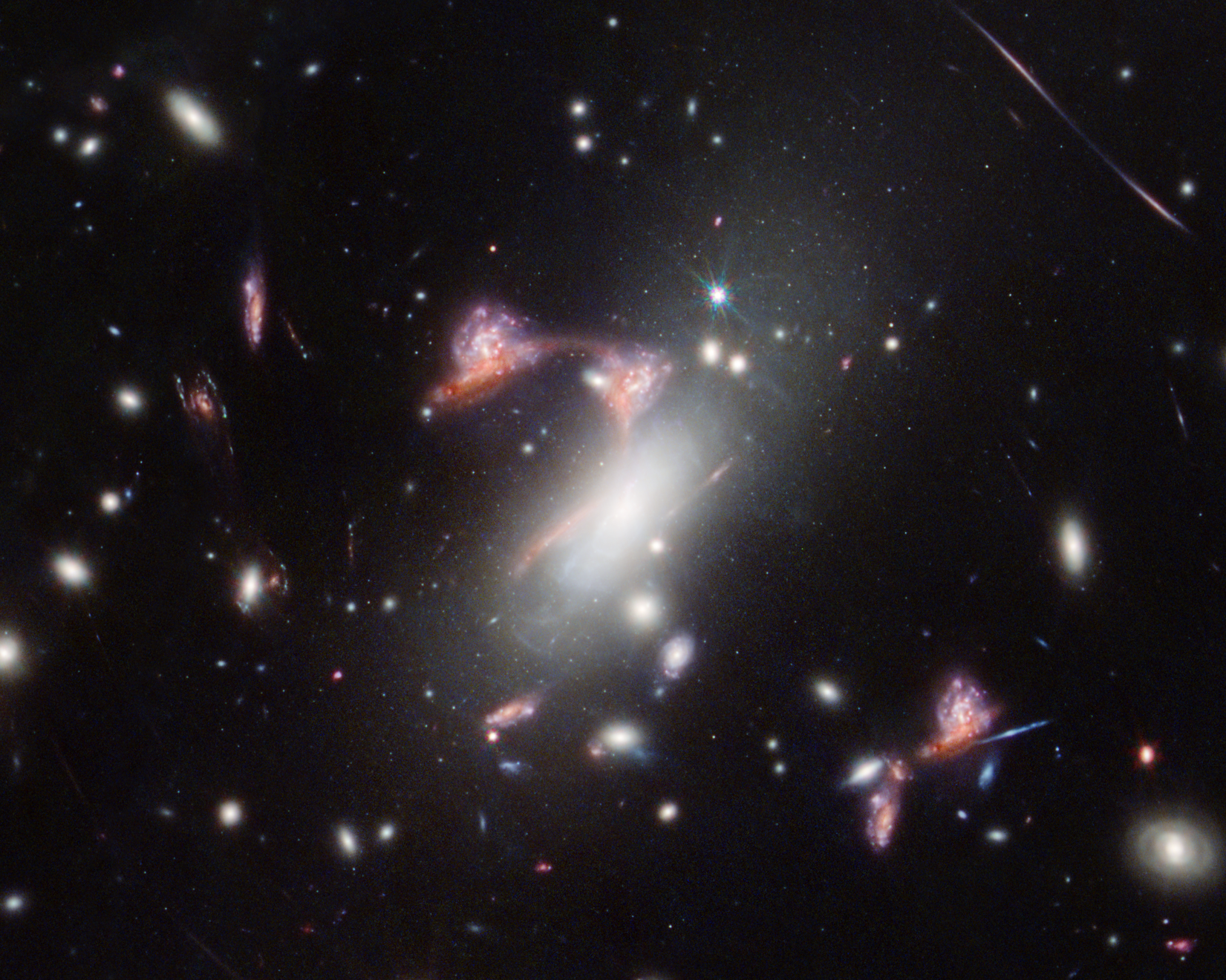
NASA’s Webb Reveals Distorted Galaxy Forming Cosmic Question Mark
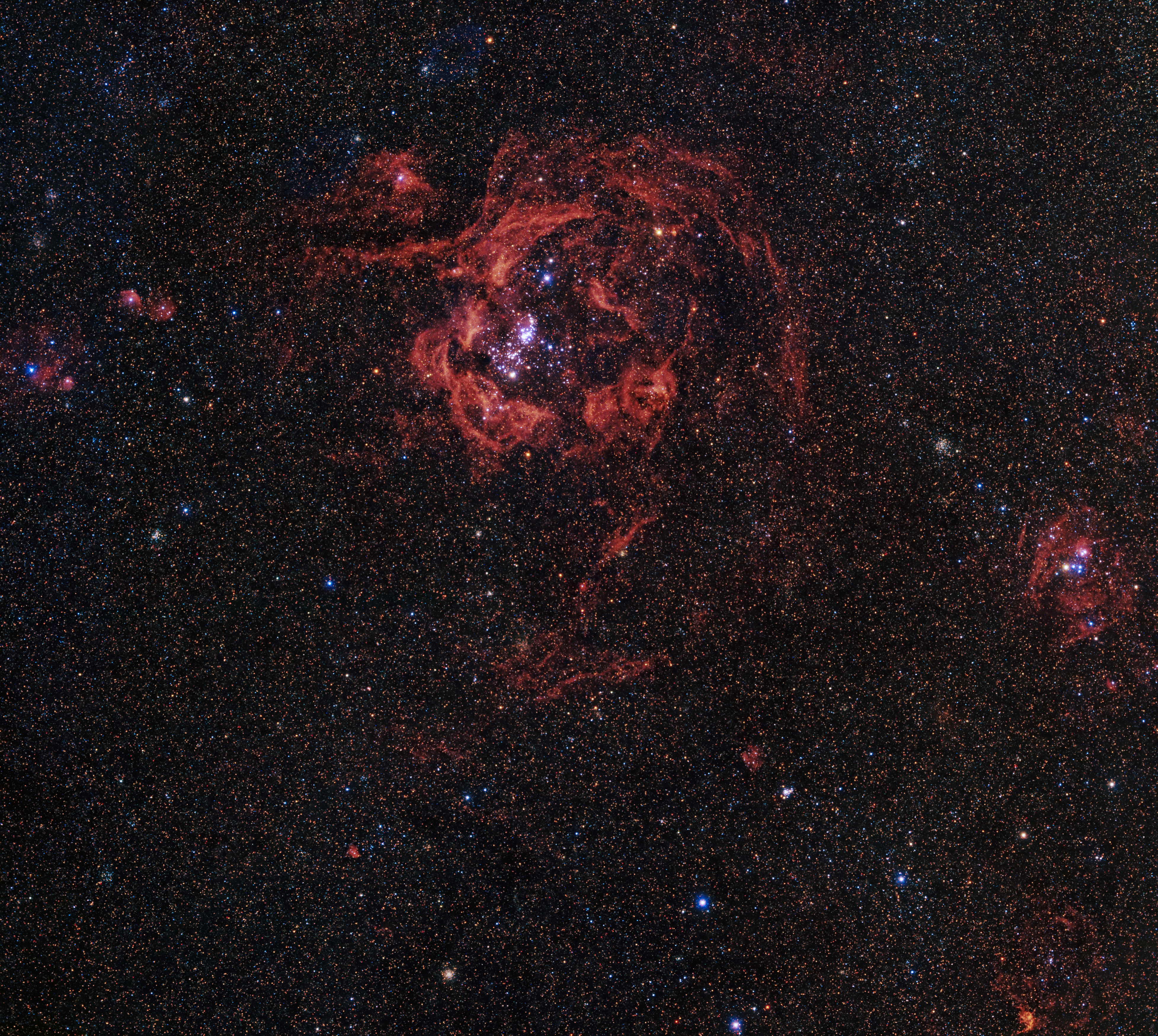
Hubble Zooms into the Rosy Tendrils of Andromeda
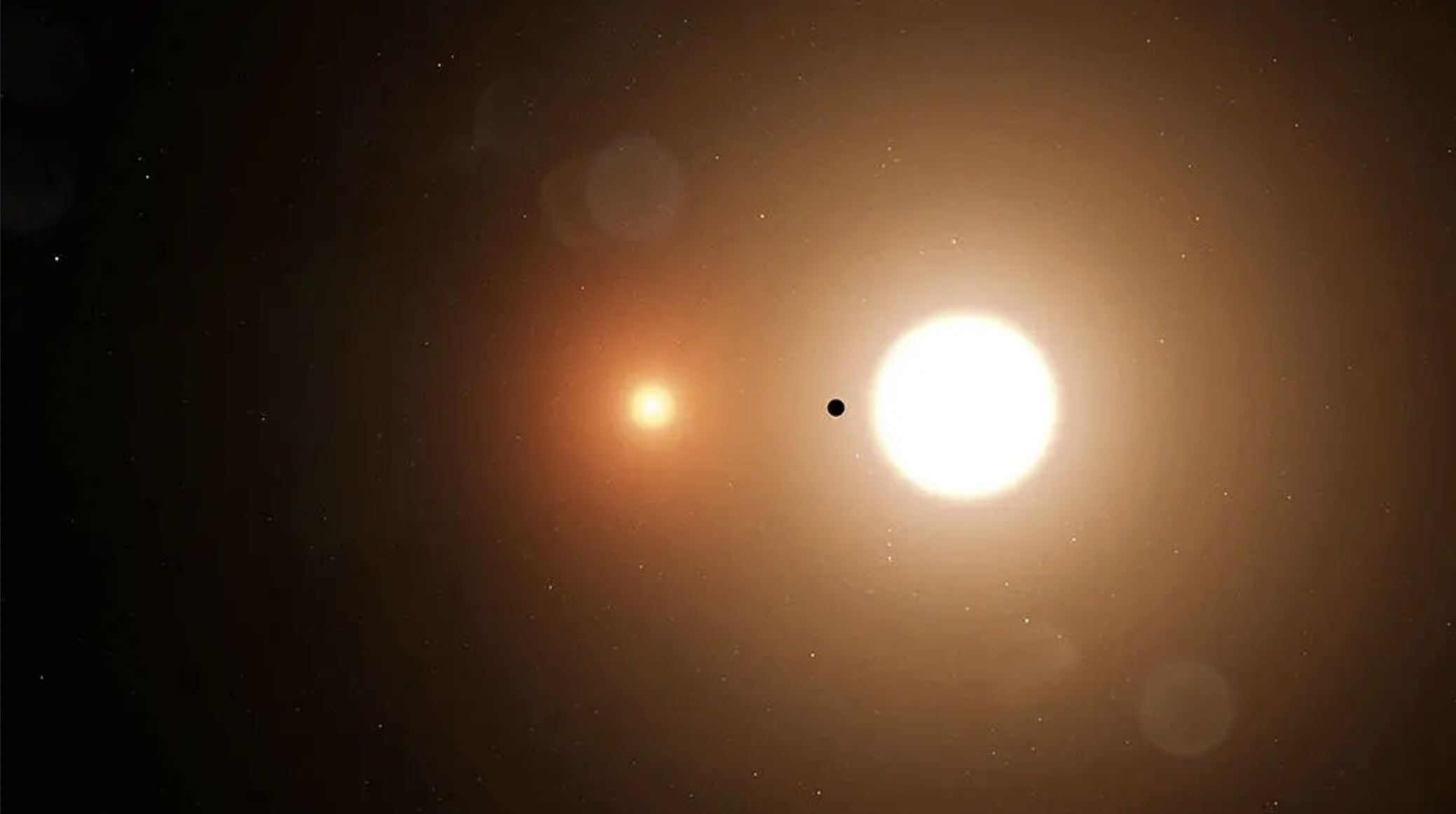
Join the Eclipsing Binary Patrol and Spot Rare Stellar Pairs!

NASA Tunnel Generates Decades of Icy Aircraft Safety Data

Research Plane Dons New Colors for NASA Hybrid Electric Flight Tests

NASA G-IV Plane Will Carry Next-Generation Science Instrument
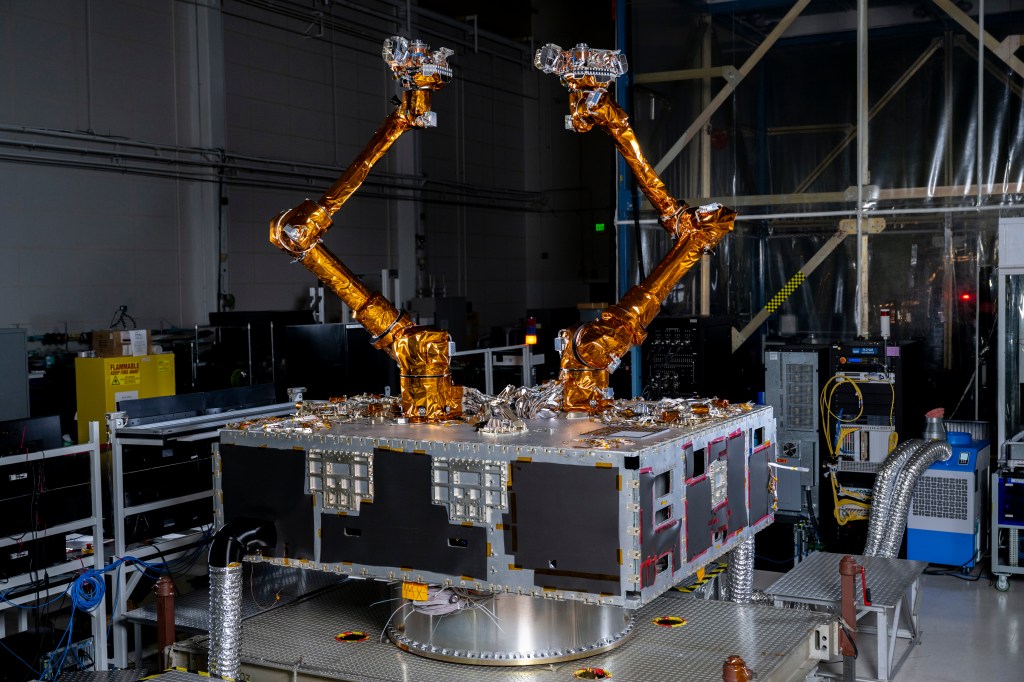
NASA to Support DARPA Robotic Satellite Servicing Program

NASA JPL Developing Underwater Robots to Venture Deep Below Polar Ice
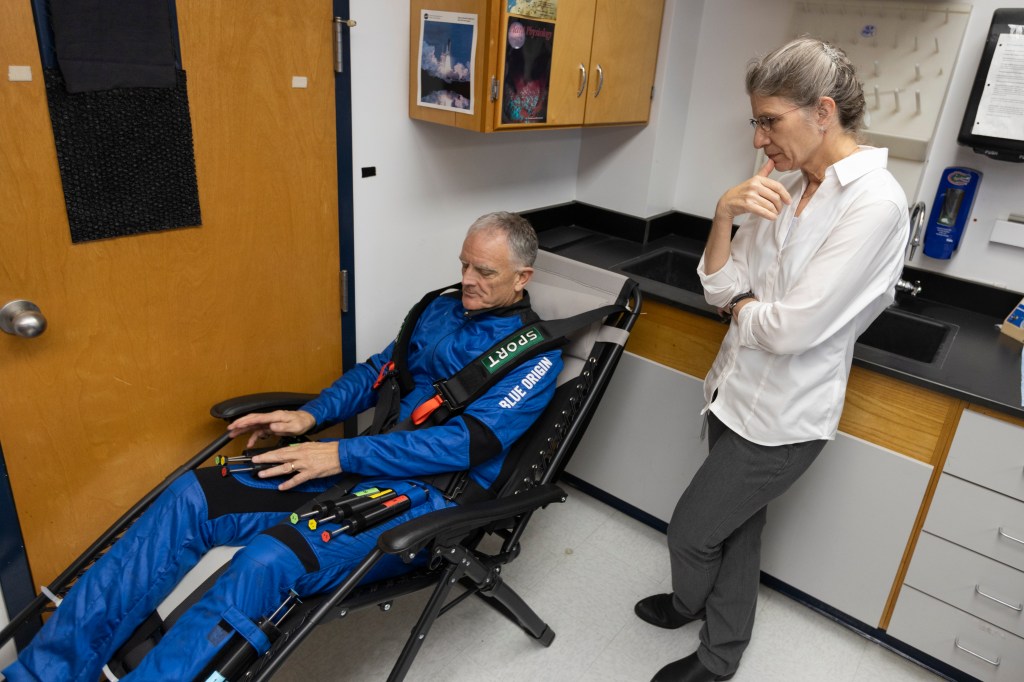
First NASA-Supported Researcher to Fly on Suborbital Rocket
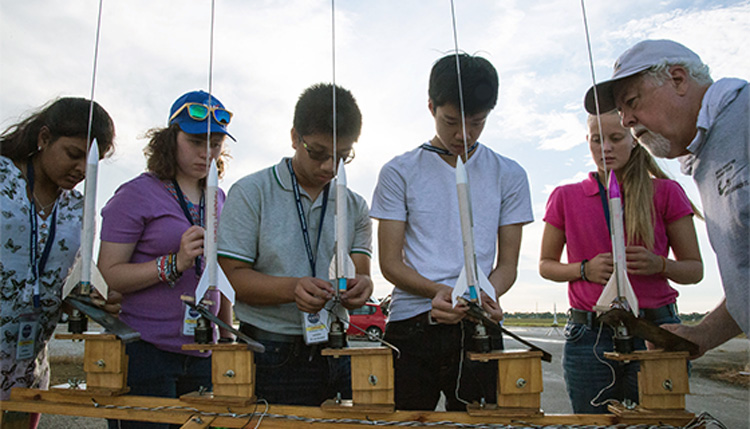
Learn Math with NASA Science

Eclipses Create Atmospheric Gravity Waves, NASA Student Teams Confirm
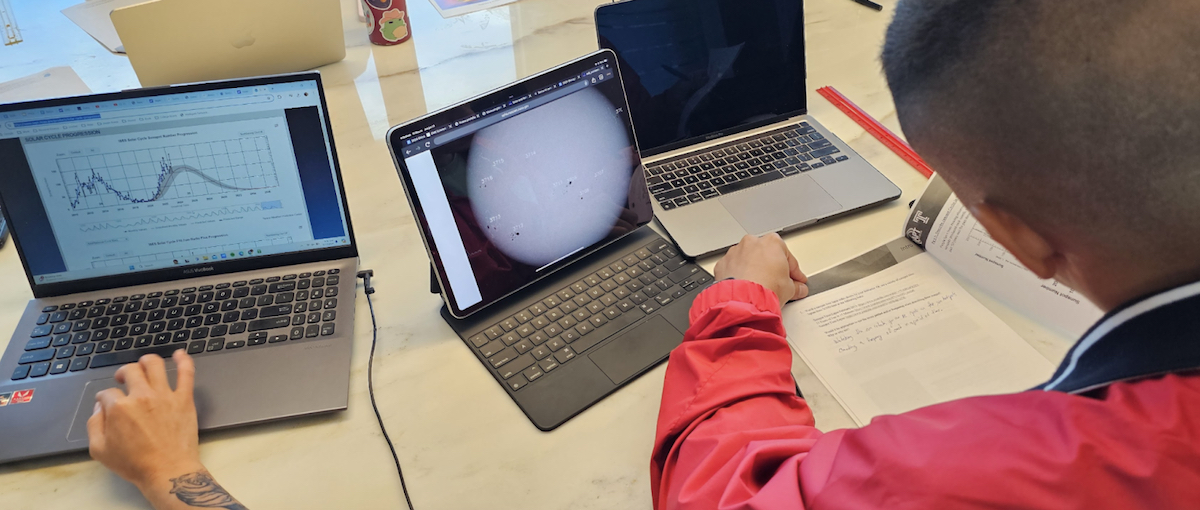
Leveraging Teacher Leaders to Share the Joy of NASA Heliophysics
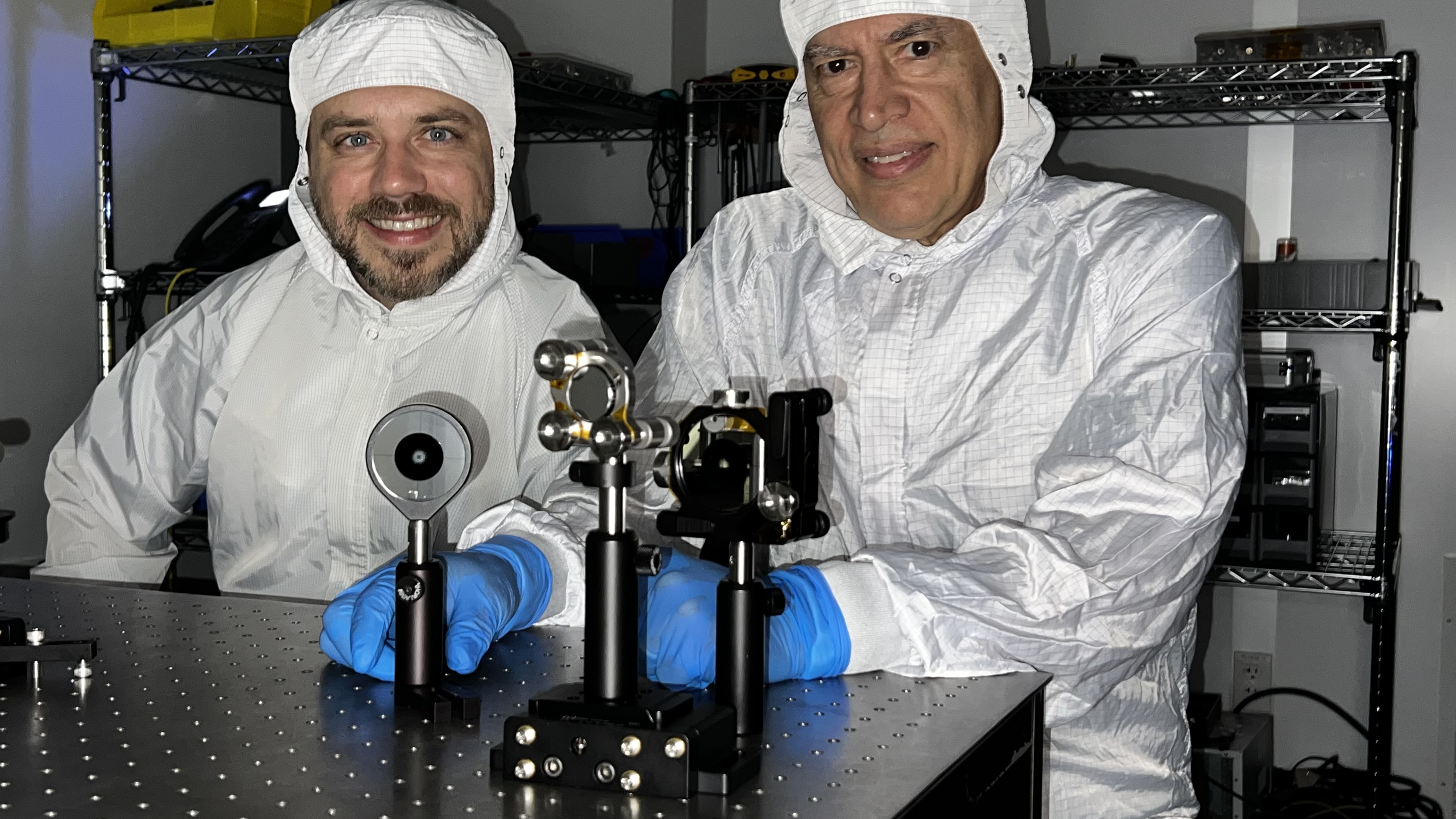
Carbon Nanotubes and the Search for Life on Other Planets
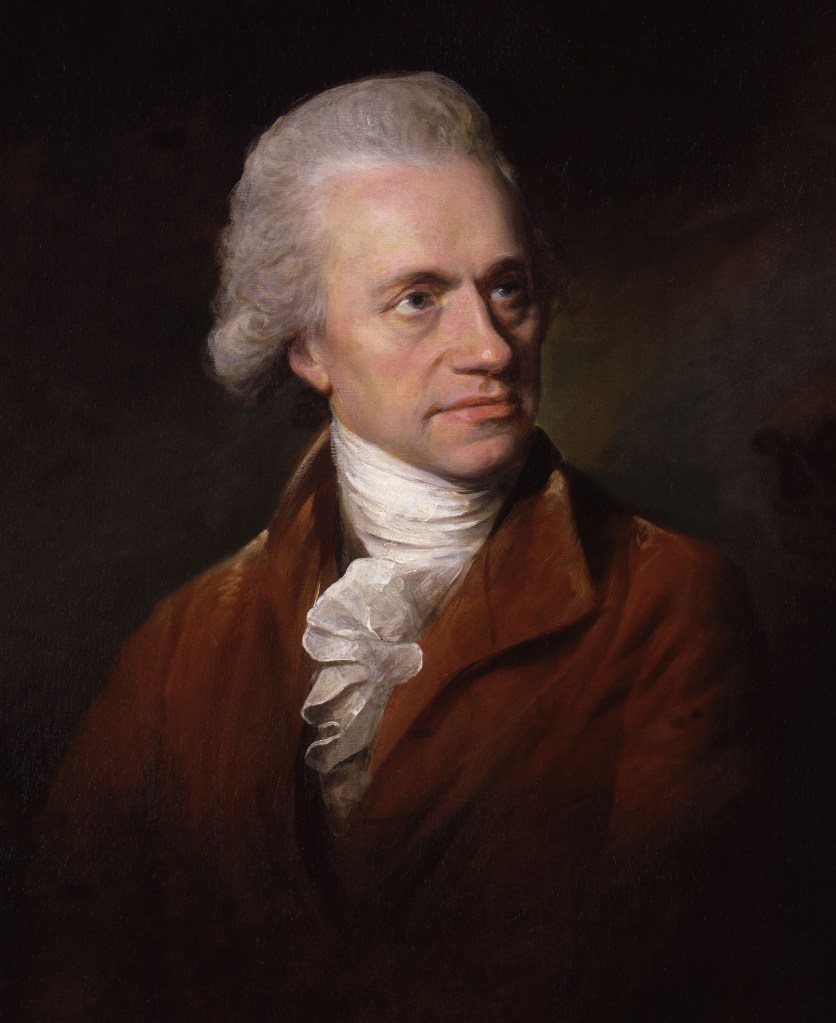
235 Years Ago: Herschel Discovers Saturn’s Moon Enceladus

La NASA invita a los medios al lanzamiento de Europa Clipper

El X-59 de la NASA avanza en las pruebas de preparación para volar

La NASA invita a creadores de las redes sociales al lanzamiento de la misión Europa Clipper
Nasa decides to bring starliner spacecraft back to earth without crew .
Jessica Taveau
Nasa headquarters.
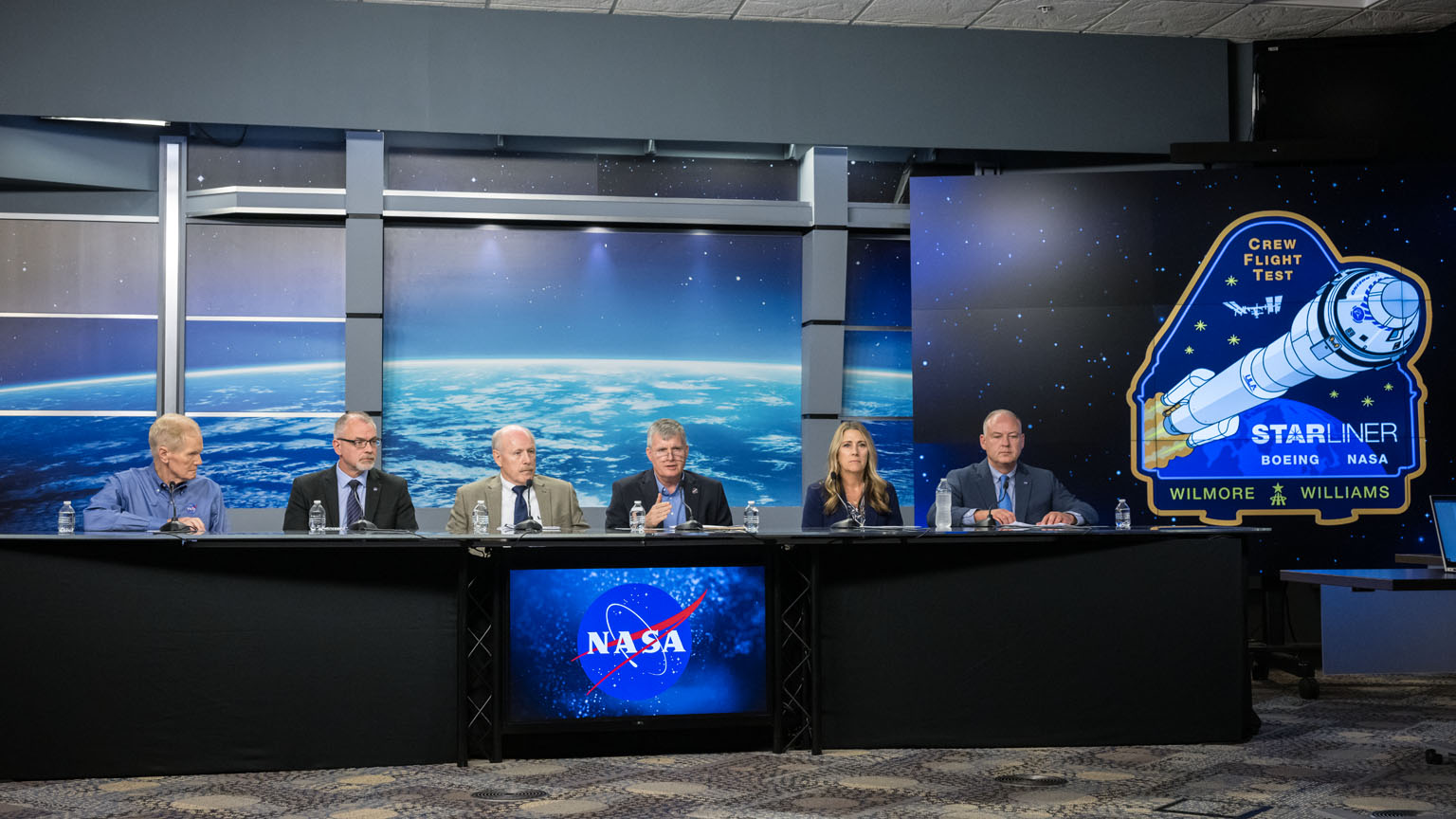
NASA will return Boeing’s Starliner to Earth without astronauts Butch Wilmore and Suni Williams aboard the spacecraft, the agency announced Saturday. The uncrewed return allows NASA and Boeing to continue gathering testing data on Starliner during its upcoming flight home, while also not accepting more risk than necessary for its crew.
Wilmore and Williams, who flew to the International Space Station in June aboard NASA’s Boeing Crew Flight Test, have been busy supporting station research, maintenance, and Starliner system testing and data analysis, among other activities.
“Spaceflight is risky, even at its safest and most routine. A test flight, by nature, is neither safe, nor routine. The decision to keep Butch and Suni aboard the International Space Station and bring Boeing’s Starliner home uncrewed is the result of our commitment to safety: our core value and our North Star,” said NASA Administrator Bill Nelson. “I’m grateful to both the NASA and Boeing teams for all their incredible and detailed work.”
Wilmore and Williams will continue their work formally as part of the Expedition 71/72 crew through February 2025. They will fly home aboard a Dragon spacecraft with two other crew members assigned to the agency’s SpaceX Crew-9 mission. Starliner is expected to depart from the space station and make a safe, controlled autonomous re-entry and landing in early September.
NASA and Boeing identified helium leaks and experienced issues with the spacecraft reaction control thrusters on June 6 as Starliner approached the space station. Since then, engineering teams have completed a significant amount of work , including reviewing a collection of data, conducting flight and ground testing, hosting independent reviews with agency propulsion experts, and developing various return contingency plans. The uncertainty and lack of expert concurrence does not meet the agency’s safety and performance requirements for human spaceflight, thus prompting NASA leadership to move the astronauts to the Crew-9 mission.
“Decisions like this are never easy, but I want to commend our NASA and Boeing teams for their thorough analysis, transparent discussions, and focus on safety during the Crew Flight Test,” said Ken Bowersox, associate administrator for NASA’s Space Operations Mission Directorate. “We’ve learned a lot about the spacecraft during its journey to the station and its docked operations. We also will continue to gather more data about Starliner during the uncrewed return and improve the system for future flights to the space station.”
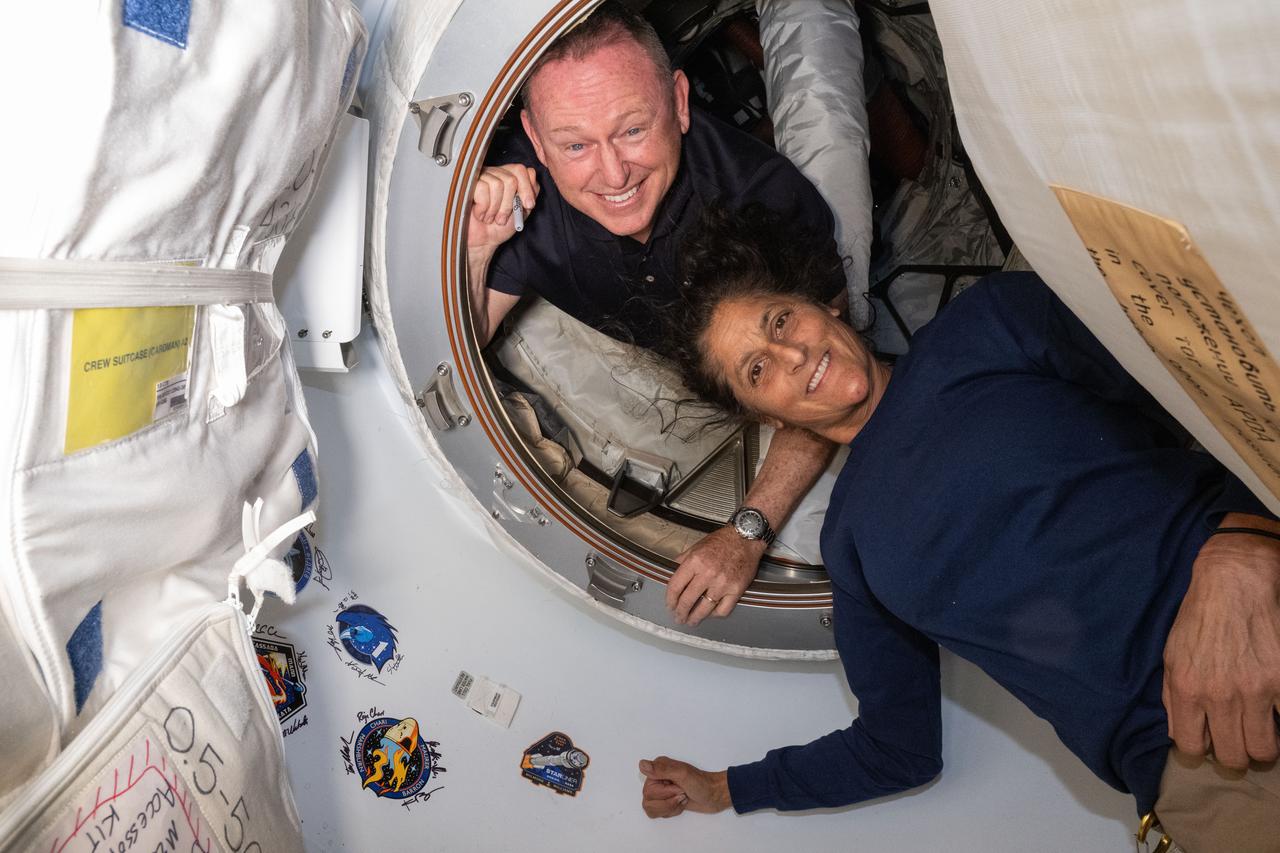
Starliner is designed to operate autonomously and previously completed two uncrewed flights. NASA and Boeing will work together to adjust end-of-mission planning and Starliner’s systems to set up for the uncrewed return in the coming weeks. Starliner must return to Earth before the Crew-9 mission launches to ensure a docking port is available on station.
“Starliner is a very capable spacecraft and, ultimately, this comes down to needing a higher level of certainty to perform a crewed return,” said Steve Stich, manager of NASA’s Commercial Crew Program. “The NASA and Boeing teams have completed a tremendous amount of testing and analysis, and this flight test is providing critical information on Starliner’s performance in space. Our efforts will help prepare for the uncrewed return and will greatly benefit future corrective actions for the spacecraft.”
NASA’s Commercial Crew Program requires spacecraft fly a crewed test flight to prove the system is ready for regular flights to and from the space station. Following Starliner’s return, the agency will review all mission-related data to inform what additional actions are required to meet NASA’s certification requirements.
The agency’s SpaceX Crew-9 mission, originally slated with four crew members , will launch no earlier than Tuesday, Sept. 24. The agency will share more information about the Crew-9 complement when details are finalized.
NASA and SpaceX currently are working several items before launch, including reconfiguring seats on the Crew-9 Dragon, and adjusting the manifest to carry additional cargo, personal effects, and Dragon-specific spacesuits for Wilmore and Williams. In addition, NASA and SpaceX now will use new facilities at Space Launch Complex-40 at Cape Canaveral Space Force Station in Florida to launch Crew-9, which provides increased operational flexibility around NASA’s planned Europa Clipper launch.
The Crew-9 mission will be the ninth rotational mission to the space station under NASA’s Commercial Crew Program, which works with the American aerospace industry to meet the goal of safe, reliable, and cost-effective transportation to and from the orbital outpost on American-made rockets and spacecraft launching from American soil.
For more than two decades, people have lived and worked continuously aboard the International Space Station, advancing scientific knowledge and demonstrating new technologies, making research breakthroughs not possible on Earth. The station is a critical testbed for NASA to understand and overcome the challenges of long-duration spaceflight and to expand commercial opportunities in low Earth orbit. As commercial companies focus on providing human space transportation services and destinations as part of a robust low Earth orbit economy , NASA’s Artemis campaign is underway at the Moon where the agency is preparing for future human exploration of Mars.
Find more information on NASA’s Commercial Crew Program at:
https://www.nasa.gov/commercialcrew
-end-
Meira Bernstein / Josh Finch Headquarters, Washington 202-358-1100 [email protected] / [email protected]
Steve Siceloff / Danielle Sempsrott / Stephanie Plucinsky Kennedy Space Center, Florida 321-867-2468 [email protected] / [email protected] / [email protected]
Leah Cheshier / Sandra Jones Johnson Space Center, Houston 281-483-5111 [email protected] / [email protected]
Related Terms
- International Space Station (ISS)
- Commercial Crew
- Kennedy Space Center
Ask the publishers to restore access to 500,000+ books.
Internet Archive Audio

- This Just In
- Grateful Dead
- Old Time Radio
- 78 RPMs and Cylinder Recordings
- Audio Books & Poetry
- Computers, Technology and Science
- Music, Arts & Culture
- News & Public Affairs
- Spirituality & Religion
- Radio News Archive

- Flickr Commons
- Occupy Wall Street Flickr
- NASA Images
- Solar System Collection
- Ames Research Center

- All Software
- Old School Emulation
- MS-DOS Games
- Historical Software
- Classic PC Games
- Software Library
- Kodi Archive and Support File
- Vintage Software
- CD-ROM Software
- CD-ROM Software Library
- Software Sites
- Tucows Software Library
- Shareware CD-ROMs
- Software Capsules Compilation
- CD-ROM Images
- ZX Spectrum
- DOOM Level CD

- Smithsonian Libraries
- FEDLINK (US)
- Lincoln Collection
- American Libraries
- Canadian Libraries
- Universal Library
- Project Gutenberg
- Children's Library
- Biodiversity Heritage Library
- Books by Language
- Additional Collections

- Prelinger Archives
- Democracy Now!
- Occupy Wall Street
- TV NSA Clip Library
- Animation & Cartoons
- Arts & Music
- Computers & Technology
- Cultural & Academic Films
- Ephemeral Films
- Sports Videos
- Videogame Videos
- Youth Media
Search the history of over 866 billion web pages on the Internet.
Mobile Apps
- Wayback Machine (iOS)
- Wayback Machine (Android)
Browser Extensions
Archive-it subscription.
- Explore the Collections
- Build Collections
Save Page Now
Capture a web page as it appears now for use as a trusted citation in the future.
Please enter a valid web address
- Donate Donate icon An illustration of a heart shape
Journey into space : the first three decades of space exploration
Bookreader item preview, share or embed this item, flag this item for.
- Graphic Violence
- Explicit Sexual Content
- Hate Speech
- Misinformation/Disinformation
- Marketing/Phishing/Advertising
- Misleading/Inaccurate/Missing Metadata
![[WorldCat (this item)] [WorldCat (this item)]](https://archive.org/images/worldcat-small.png)
plus-circle Add Review comment Reviews
33 Previews
Better World Books
DOWNLOAD OPTIONS
No suitable files to display here.
PDF access not available for this item.
IN COLLECTIONS
Uploaded by station44.cebu on February 7, 2022
SIMILAR ITEMS (based on metadata)

COMMENTS
BBC Radio science fiction drama serial written by Charles Chilton, first broadcast in 1958 as the series Operation Luna, followed by sequels from the same author including two series of Space Force, plus a sequel by Julian Simpson.Our square-jawed heroes confront the dangers of deep space and boldly charge towards another cliffhanger ending, courageously ignoring the mortal danger, and ...
Journey Into Space : The Red Planet A 20-part sequel to the 1953 serial Journey Into Space: Operation Luna. Captain Jet Morgan and his crew aboard Discovery blast off for their epic mission to Mars, in Charles Chilton's 1954 classic, set in the distant future of 1971.
Journey Into Space : Operation Luna Parts 1 to 13. A science fiction radio serial from the 1950s, featuring Captain Jet Morgan and his crew. First broadcast in 1958, the serial is set in the far distant future of 1965.
Journey into Space (Complete Series) Journey Into Space is a BBC Radio science fiction programme written by BBC producer Charles Chilton. It was the last UK radio programme to attract a bigger evening audience than television. [1] Originally, four series were produced (the fourth was a remake of the first), which was translated into 17 ...
This is the story of 4 intrepid explorers travelling to the moon. However, not everything goes to plan. With power failure, hearing strange music and an enco...
sci fi. journey into space. + Journey Into Space is a BBC Radio science fiction programme, written by BBC producer Charles Chilton. It was the last radio programme in the UK to attract a bigger evening audience than television. Originally, four series were produced (the fourth being a remake of the first), which went on to be translated into 17 ...
Initially, the first series was simply known as Journey into Space, with the subtitle A Tale of the Future added by the Radio Times, but within the BBC it be...
United States. Description: Journey Into Space is a BBC Radio science fiction programme, written by BBC producer Charles Chilton. It was the last radio programme in the UK to attract a bigger evening audience than television. Originally, four series were produced (the fourth being a remake of the first), which went on to be translated into 17 ...
Stream Journey Into Space free online. Journey Into Space is a BBC Radio science fiction programme, written by BBC producer Charles Chilton. It was the last radio programme in the UK to attract a bigger evening audience than television. Originally, four series were produced (the fourth...
Journey Into Space was a BBC Radio science fiction serial first broadcast from 1953 to 1956. Three series were originally broadcast, all written and produced by Charles Chilton. The first series, Operation Luna, was originally titled Journey To The Moon and broadcast in 1953/4.
JOURNEY INTO SPACE. Journey into Space was written by Charles Chilton and ran for over 60 episodes during the 1950s, entralling the nation. When it was broadcast first on the Light Programme, it was only intended to be an 8 week serial, but the success was so great that it was instantly extended to 18 episodes, with two a week instead of the originally planned one.
Journey Into Space is a BBC Radio science fiction programme written by BBC producer Charles Chilton.It was the last UK radio programme to attract a bigger evening audience than television. [1] Originally, four series were produced (the fourth was a remake of the first), which was translated into 17 languages [2] (including Hindi, Turkish and Dutch) [3] and broadcast in countries worldwide ...
Here you'll find exciting, classic, space stories, starting with Journey Into Space - A BBC Radio science fiction programme written by BBC producer Charles Chilton, first released in 1953.
Listen to Journey Into Space on Spotify. Journey Into Space is a BBC Radio science fiction programme written by BBC producer Charles Chilton. It was the last UK radio programme to attract a bigger evening audience than television. Originally, four series were produced (the fourth was a remake of the first), which was translated into 17 languages (including Hindi, Turkish and Dutch) and ...
Journey into Space : The World in Peril A 20-part sequel to the 1954 serial Journey Into Space: The Red Planet. Captain Jet Morgan and his crew return to Mars in an attempt to avert the impending Martian invasion of Earth. 1955 sci-fi classic set in the far distant future of 1972. Music composed by Van Phillips. Announcer David Jacobs.
Journey Into Space - Frozen In Time Episode 1 of 2.mp3 download 65.2M Journey Into Space - Frozen in Time Episode 2 of 2.mp3 download
This is the continuing story of 4 intrepid explorers who head back to Mars to try to discover more about the Martian plans to invade Earth and hopefully stop...
ViewSpace gives you the opportunity to explore our planet, solar system, galaxy, and universe. Provided free with the support of NASA, ViewSpace is developed by a team of scientists, educators, and communication specialists who collaborate to ensure that content is accurate, up-to-date, engaging, relevant, and accessible to a wide audience.
NASA will return Boeing's Starliner to Earth without astronauts Butch Wilmore and Suni Williams aboard the spacecraft, the agency announced Saturday. The uncrewed return allows NASA and Boeing to continue gathering testing data on Starliner during its upcoming flight home, while also not accepting more risk than necessary for its crew.
Journey Into Space is a BBC Radio science fiction programme written by BBC producer Charles Chilton. It was the last UK radio programme to attract a bigger evening audience than television.
The former director of the Jet Propulsion Laboratory in Pasadena surveys the history of America's unmanned space program, and looks at the issues and technical challenges that it faced Includes bibliographical references (pages 359-368) and index